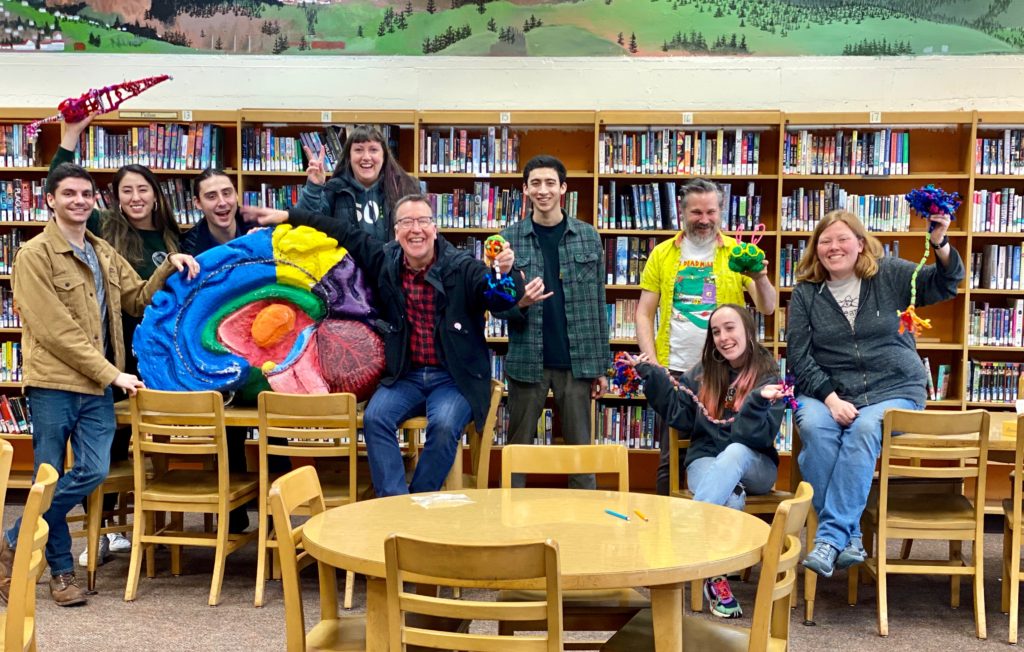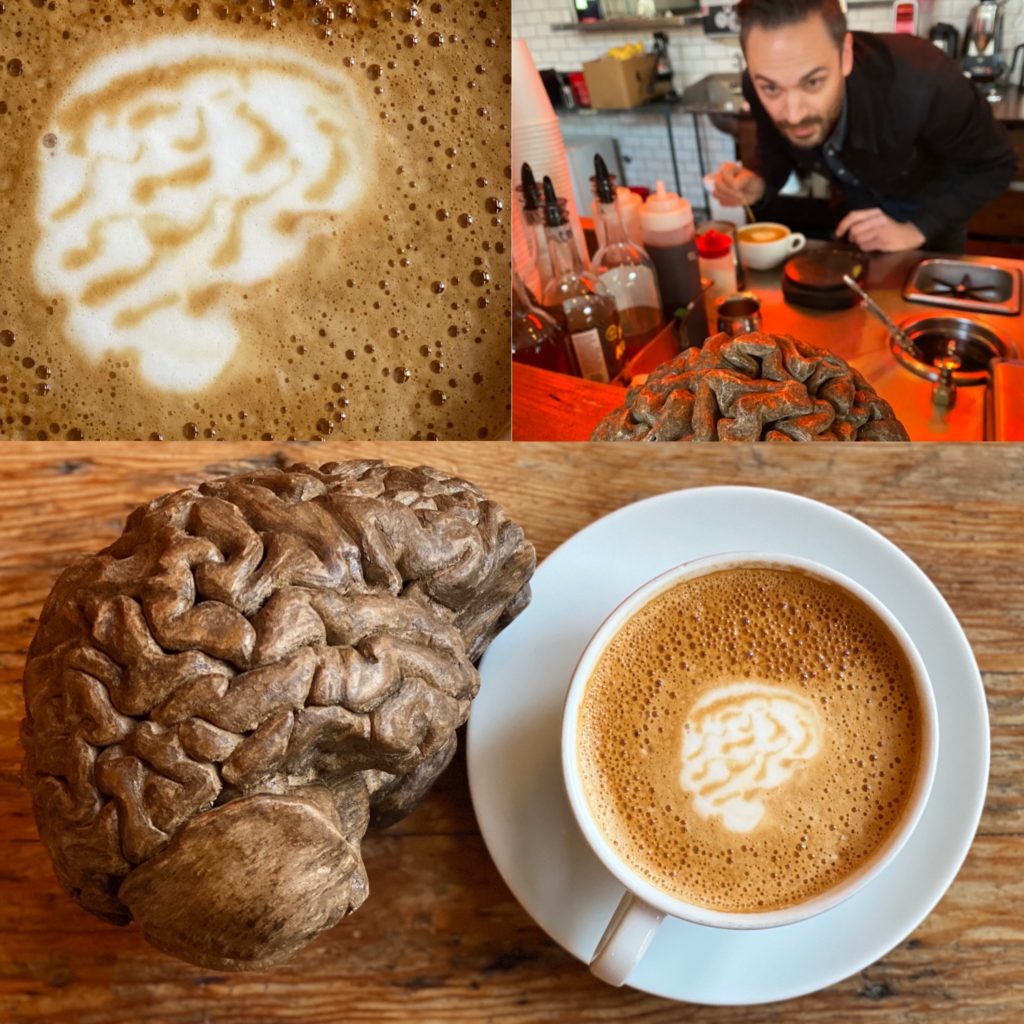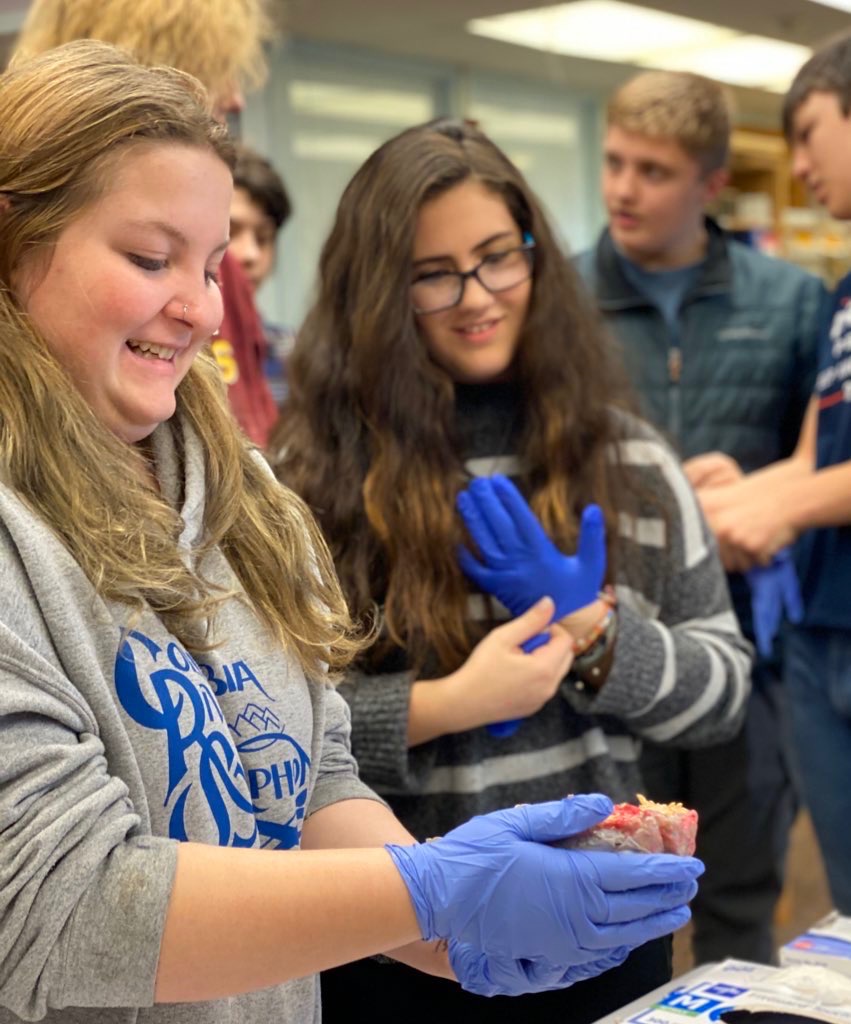
“When you learn, teach. When you get, give.”
― Maya Angelou
We love community connections. NW Noggin joined Clatsop Community College and both Warrenton and Astoria Public Schools this week for a research-based return to Oregon’s North Coast!
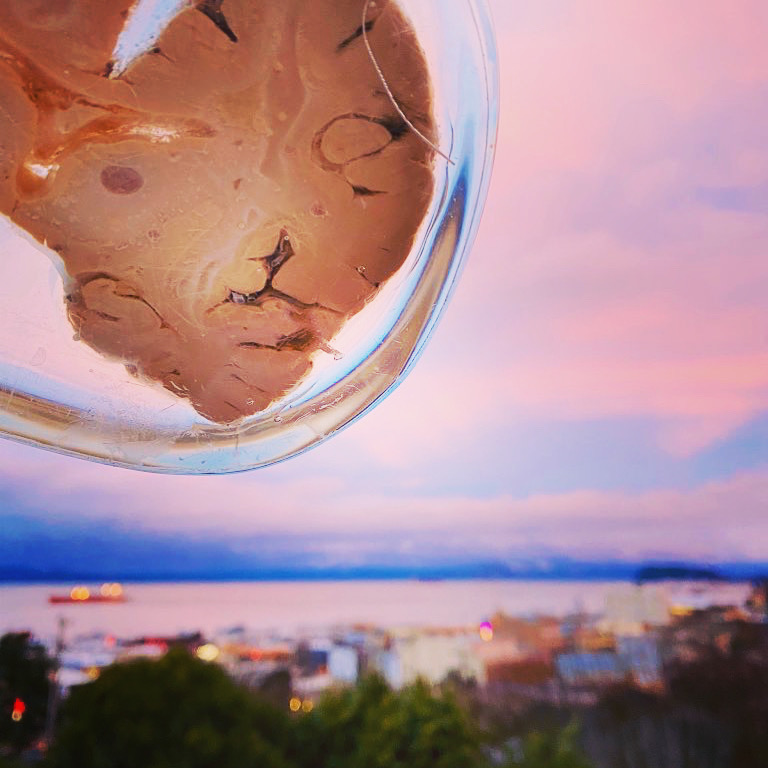
LEARN MORE: Accumbens in Astoria
Nine outreach adherents spent two nights in a home built in 1879, with a column of regional brains carved from a monkey puzzle tree out front!
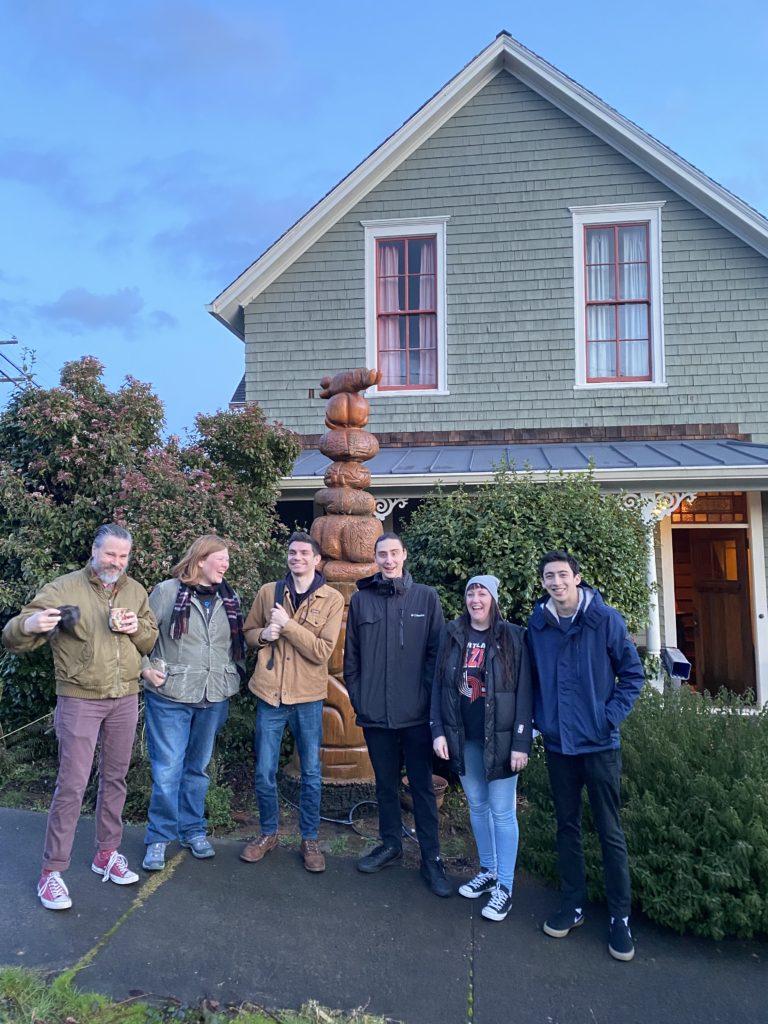
Our participants included Lidia Echeverria-Garcia, Michael Deveney, Greyson Moore, Cam Howard and Madi-Cho Richmond from Portland State University, Aaron Eisen from the National University of Natural Medicine, and Angela Hendrix, Joey Seuferling, Bill Griesar and Jeff Leake from NW Noggin.
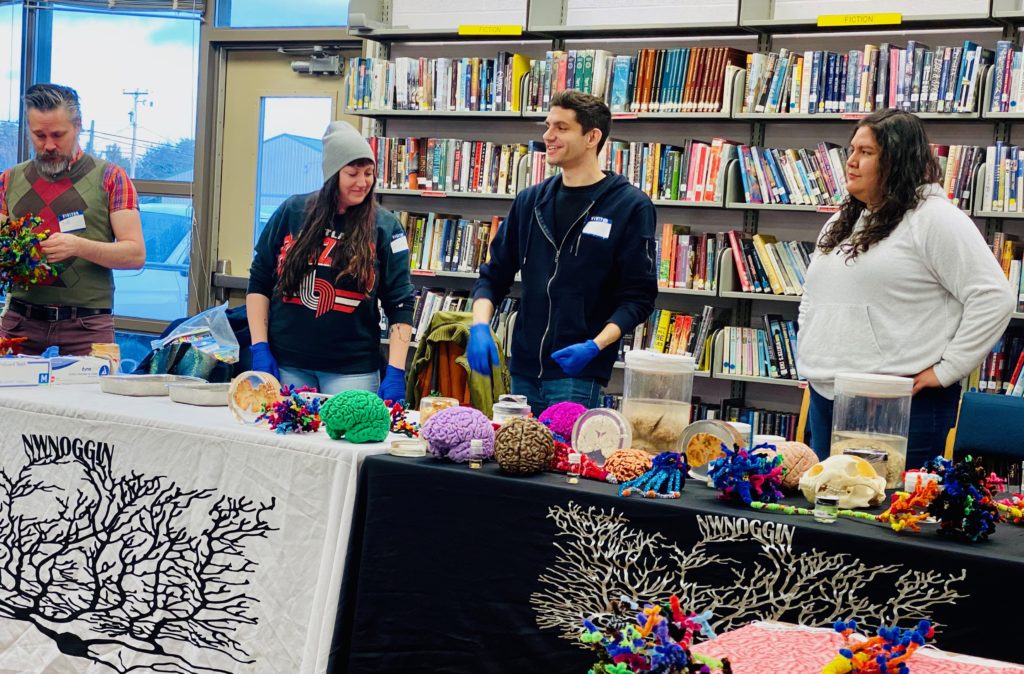
Going places is what we love best, and thanks to Meredith Payton, the Talent Search Advisor for Clatsop Community College, we met with 500+ high school students at two North Coast public schools.
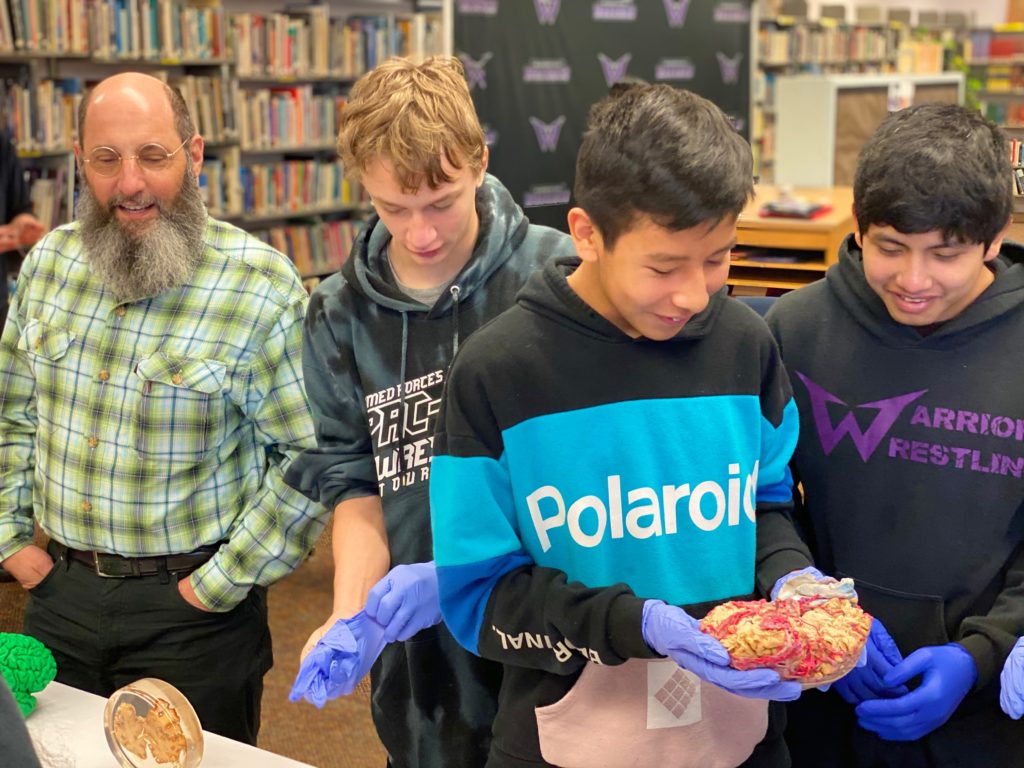
We arrived early at Warrenton High, home of the Warriors, carrying a giant styrofoam cerebral hemisphere (plus a few real ones). We introduced ourselves – and started talking brains!
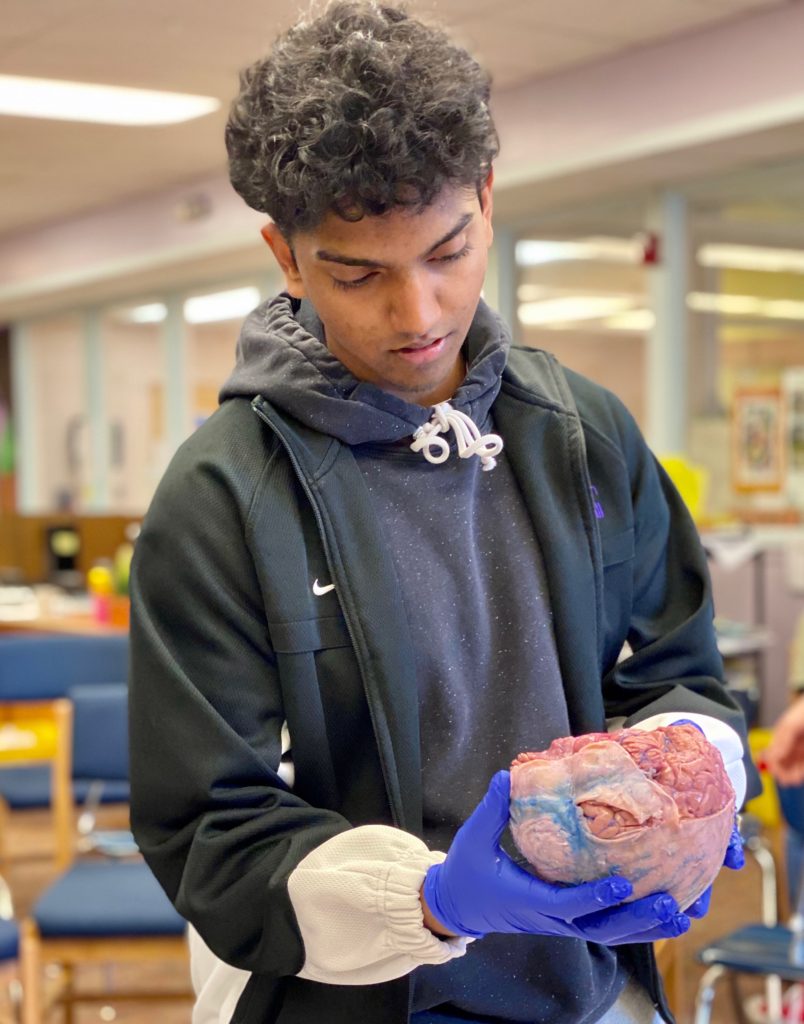
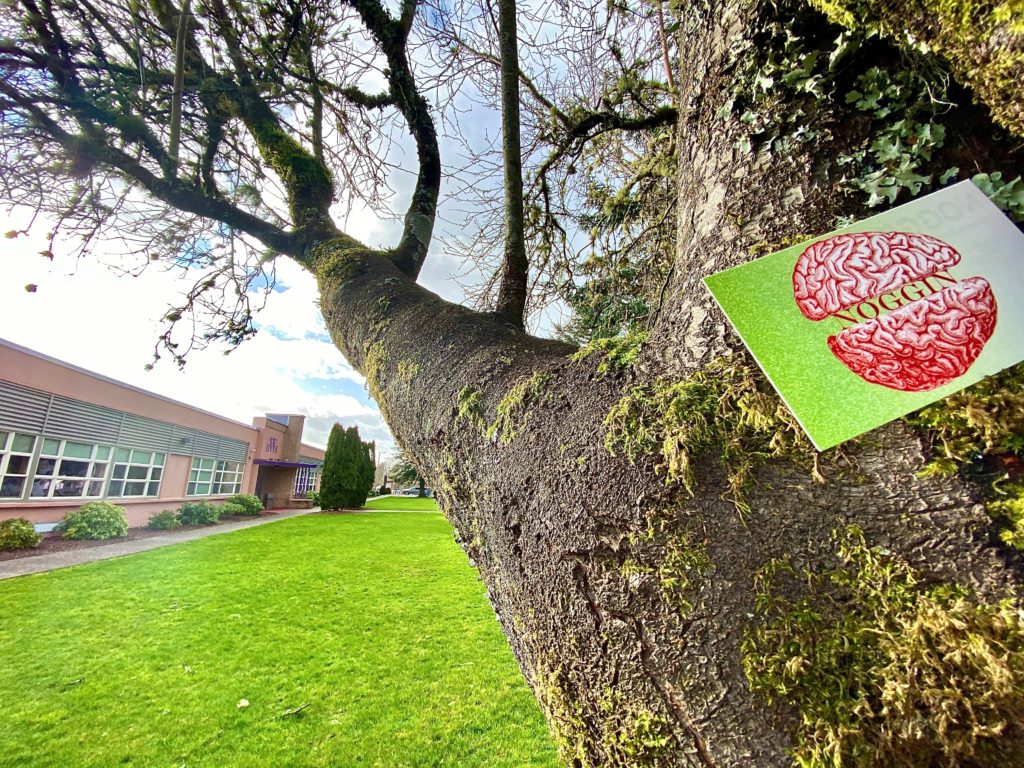
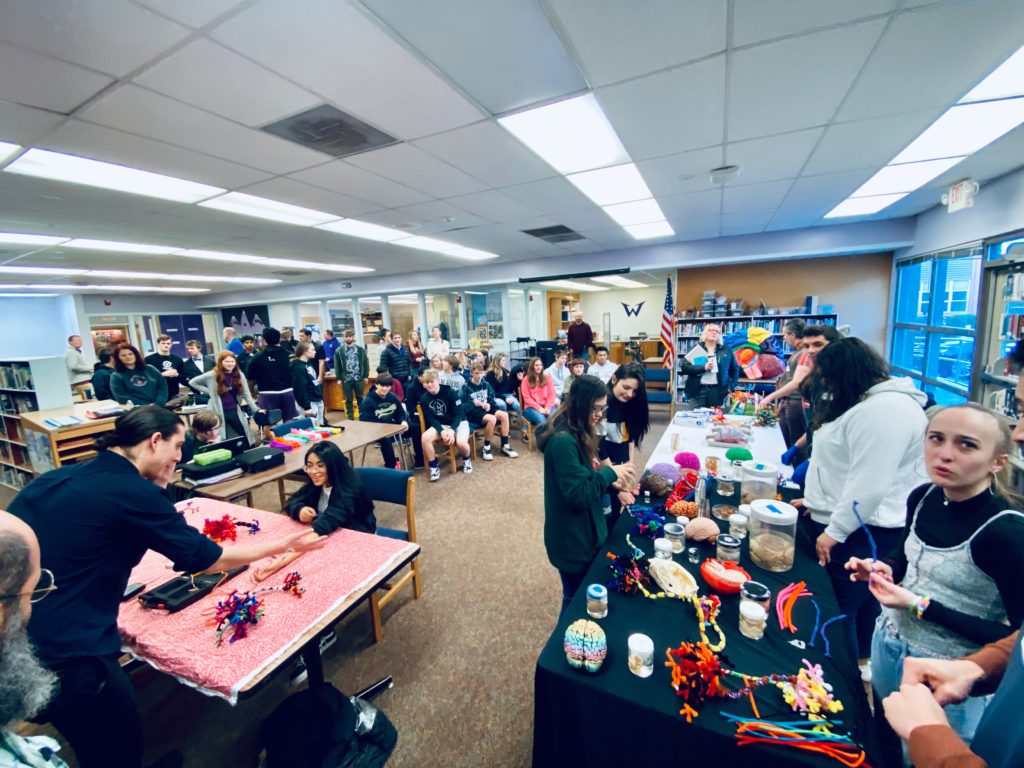
Students have compelling questions. This morning they were particularly interested in neuroscience research on sleep and the adolescent noggin.
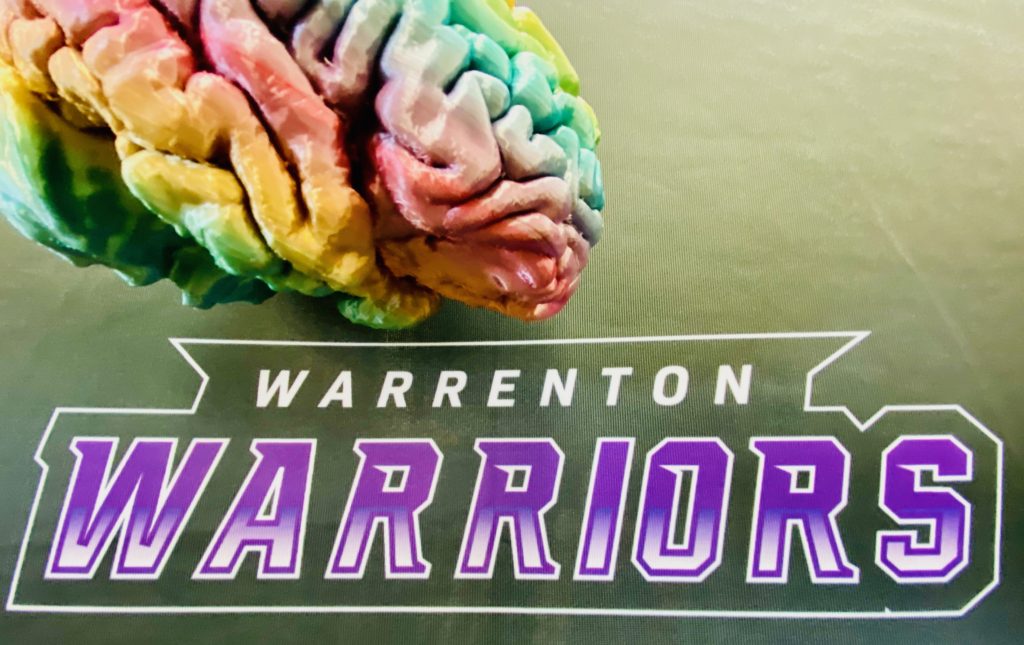
This is a common topic in schools where start times are early.
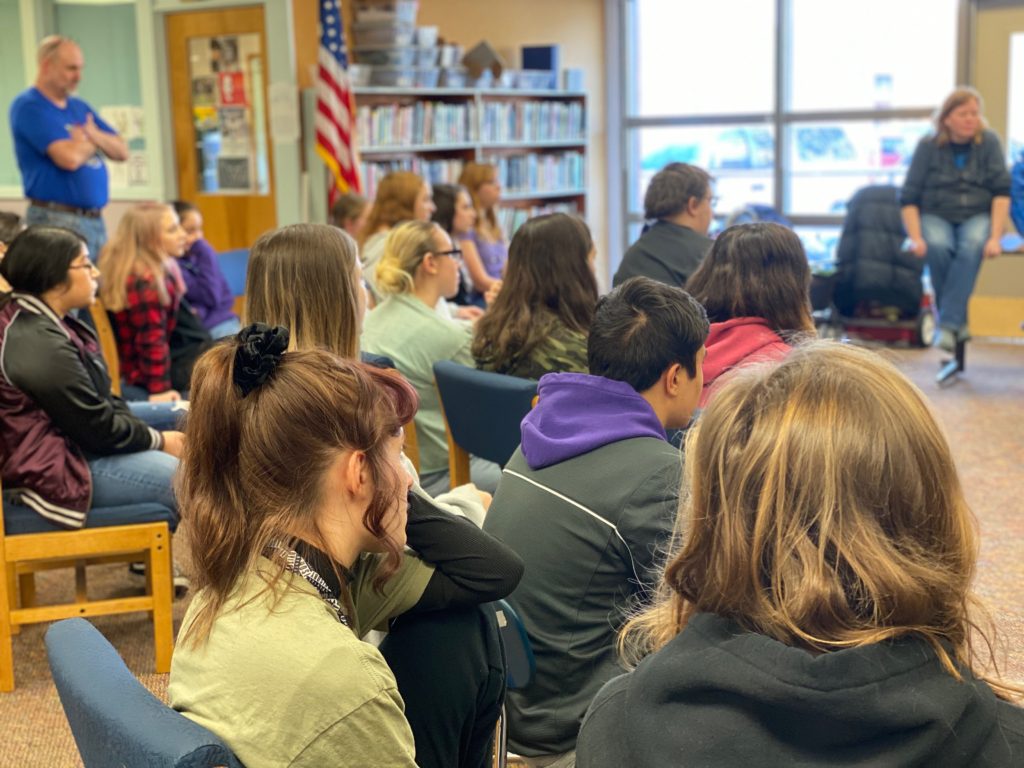
We often find ourselves discussing the thoroughly normal teenage shift in circadian rhythms towards later sleep, making early wake ups difficult and sleep deprivation common.
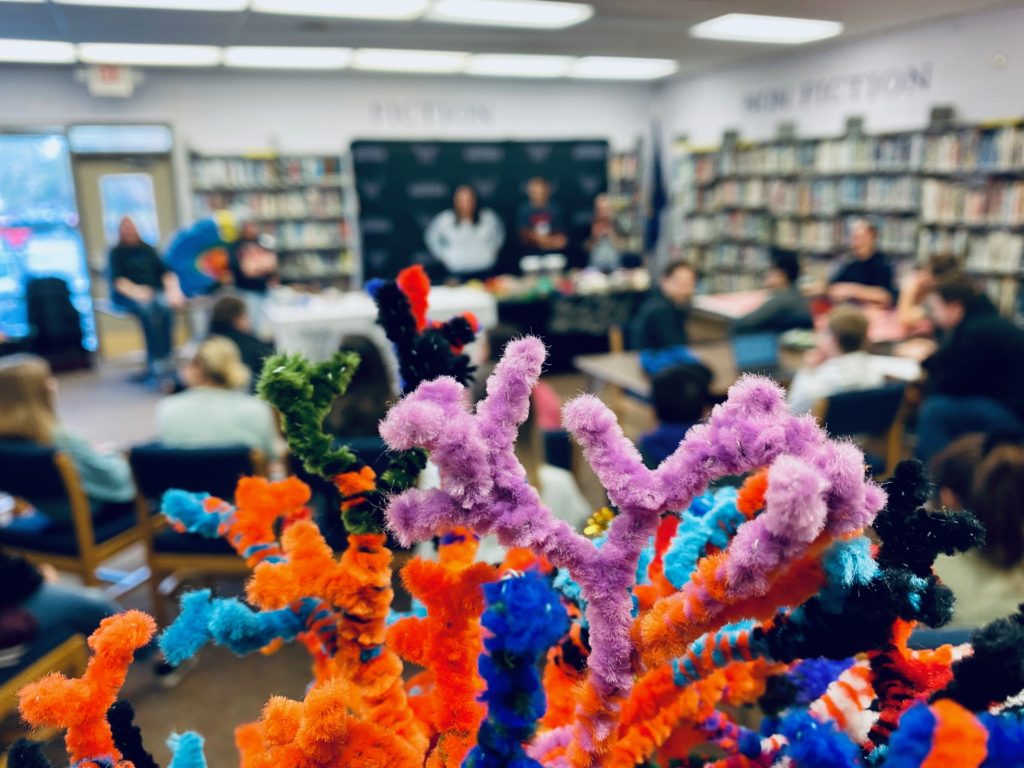
From Madi-Cho Richmond, NW Noggin volunteer: “A lack of sleep and morning bell times were a big topic throughout the day, as high schoolers are notoriously groggy in the mornings from late nighters. However, it’s not by choice. Most teenagers are biologically more likely to stay up later because they run on their developing circadian rhythms.”
Check out some relevant research at these links:
LEARN MORE: Everything but guns
LEARN MORE: Brains, biofeedback & SLEEP
LEARN MORE: Sleep habits, academic performance, and the adolescent brain structure
LEARN MORE: School Start Times, Sleep, Behavioral, Health, and Academic Outcomes
LEARN MORE: Noggins in Nod
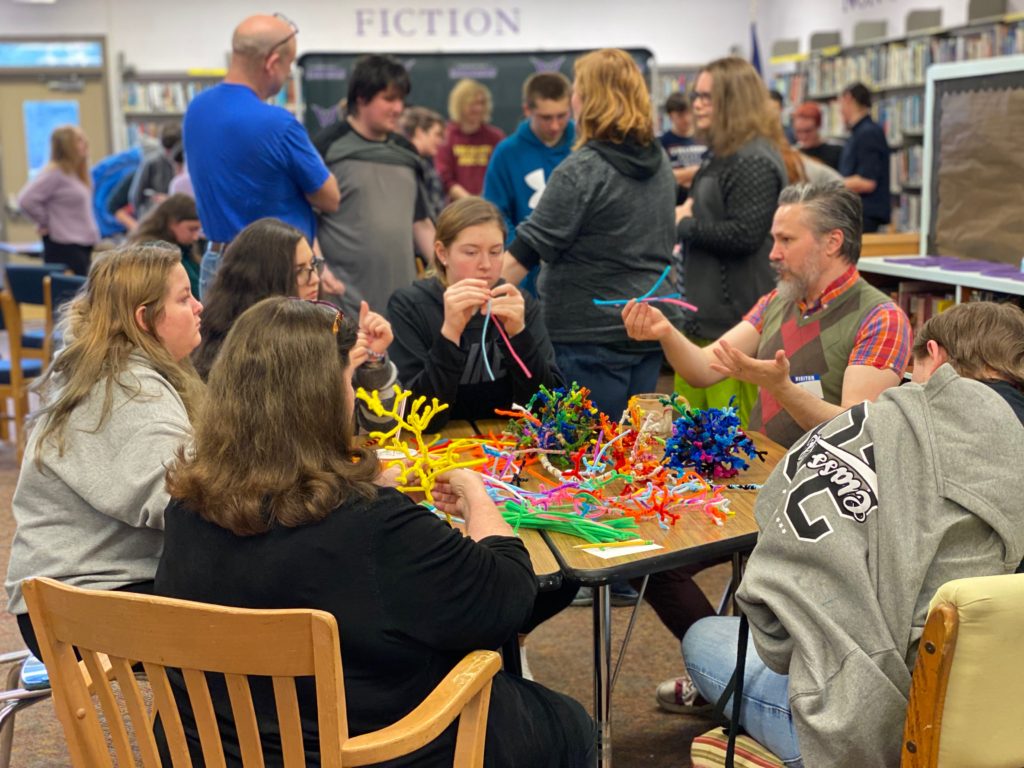
As our volunteers explained: “Biology tells you when you’ll fall asleep, while society determines when you have to get up.”
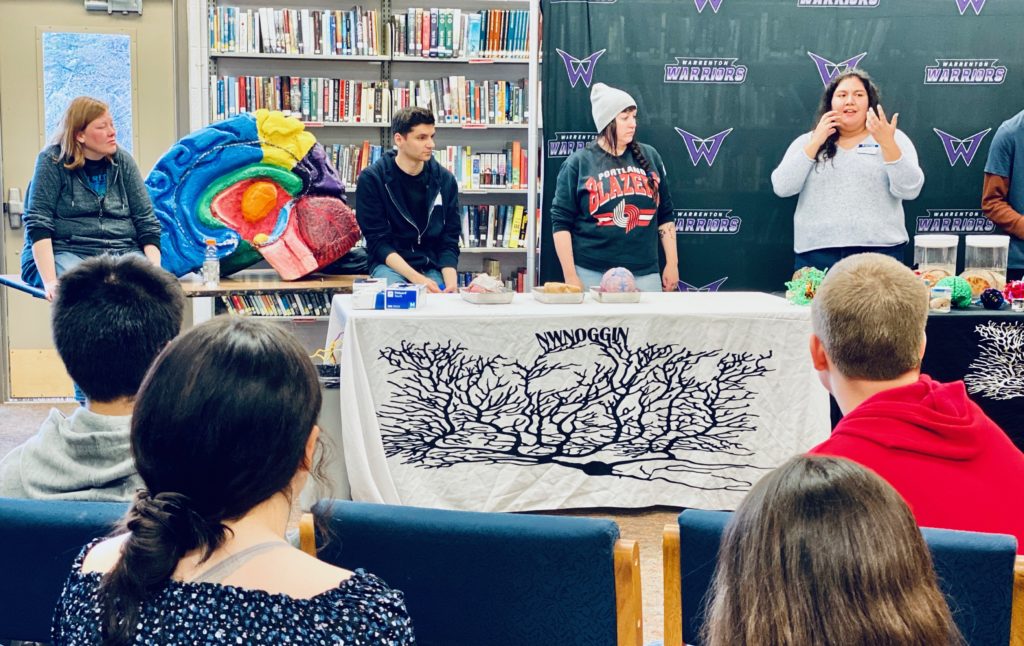
Aaron Eisen, a recent PSU graduate, summarized the research on insufficient sleep. “There are big changes in the expression of hundreds of genes,” he explained. “Many of these increase the risk of developing cancer. The International Agency for Research on Cancer (part of the World Health Organization) considers sleep deprivation a probable carcinogen!”
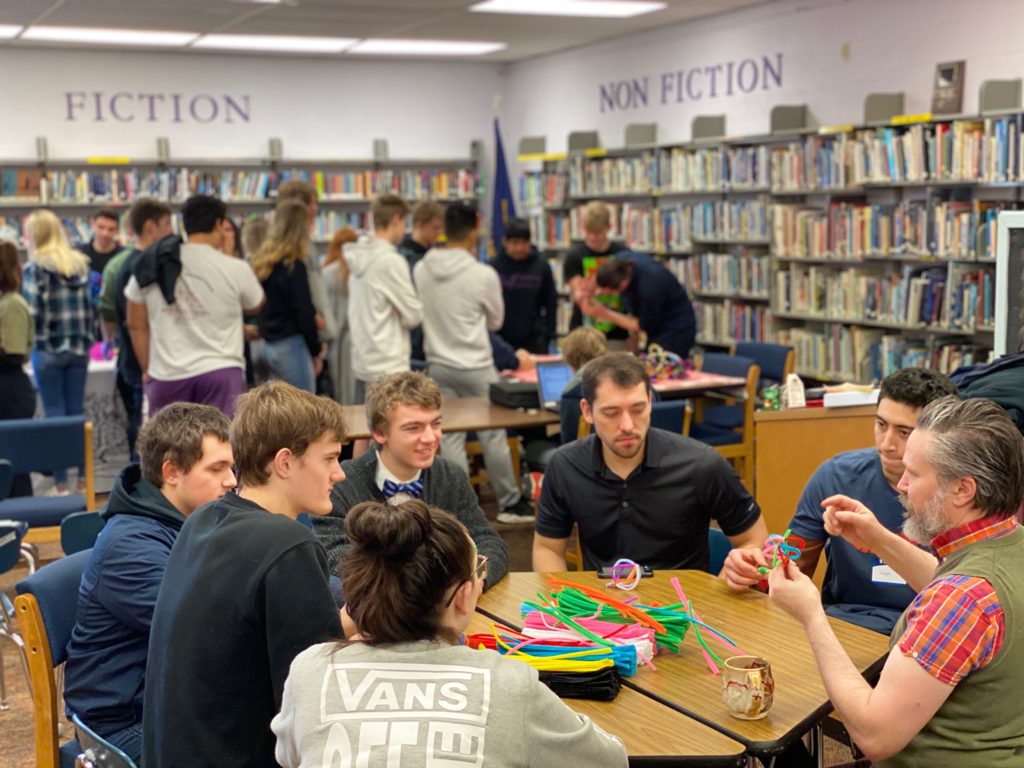
LEARN MORE: Shift work, chronodisruption and cancer?—the IARC 2007 challenge for research and prevention
LEARN MORE: “Night shift work” is probably carcinogenic: What about disturbed chronobiology in all walks of life?
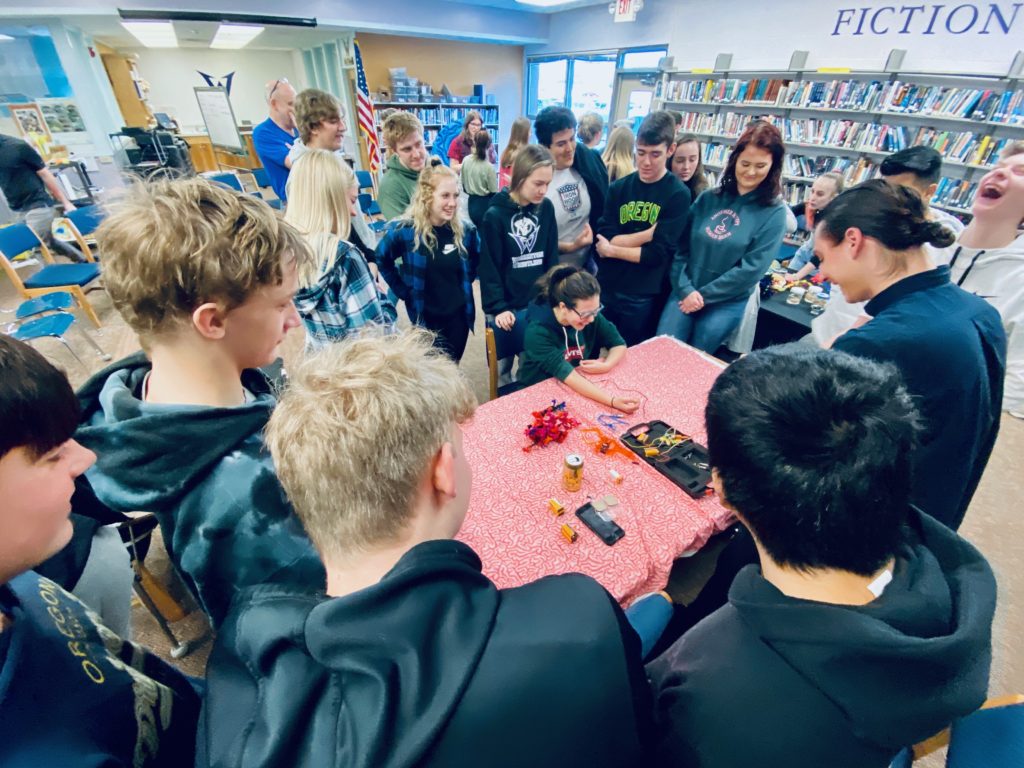
District policies mandating early classes negatively impact adolescent brain development, and school certainly should be delayed to reflect our understanding of the critical biological changes occurring during this important stage of life.
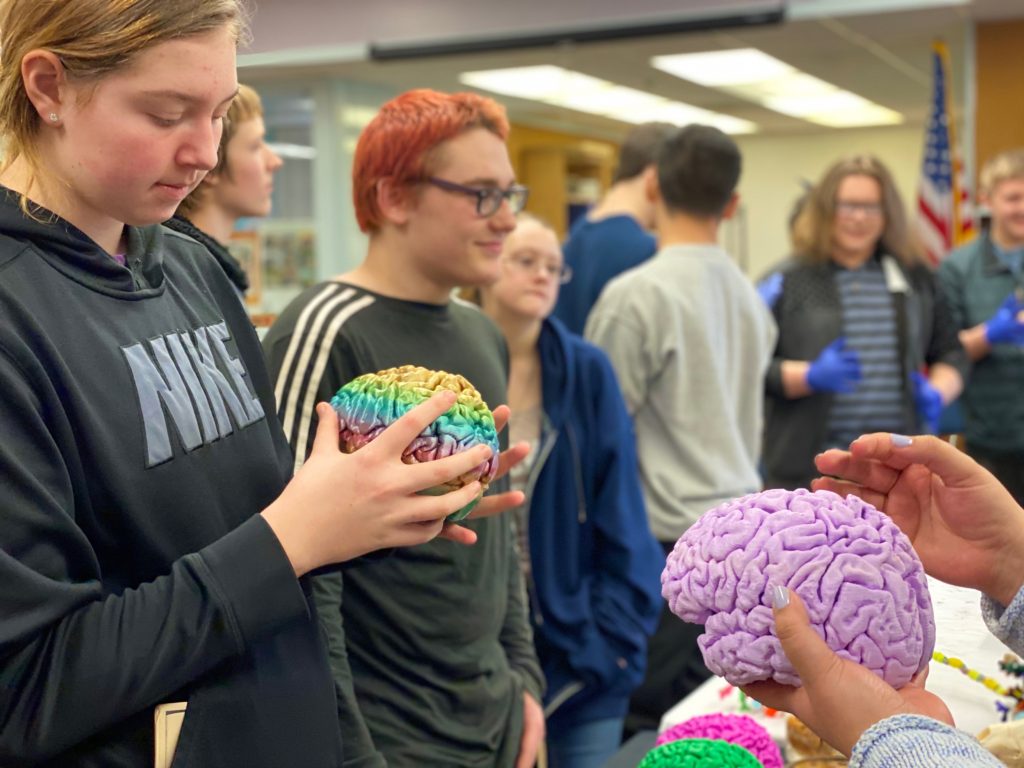
So many more questions!!
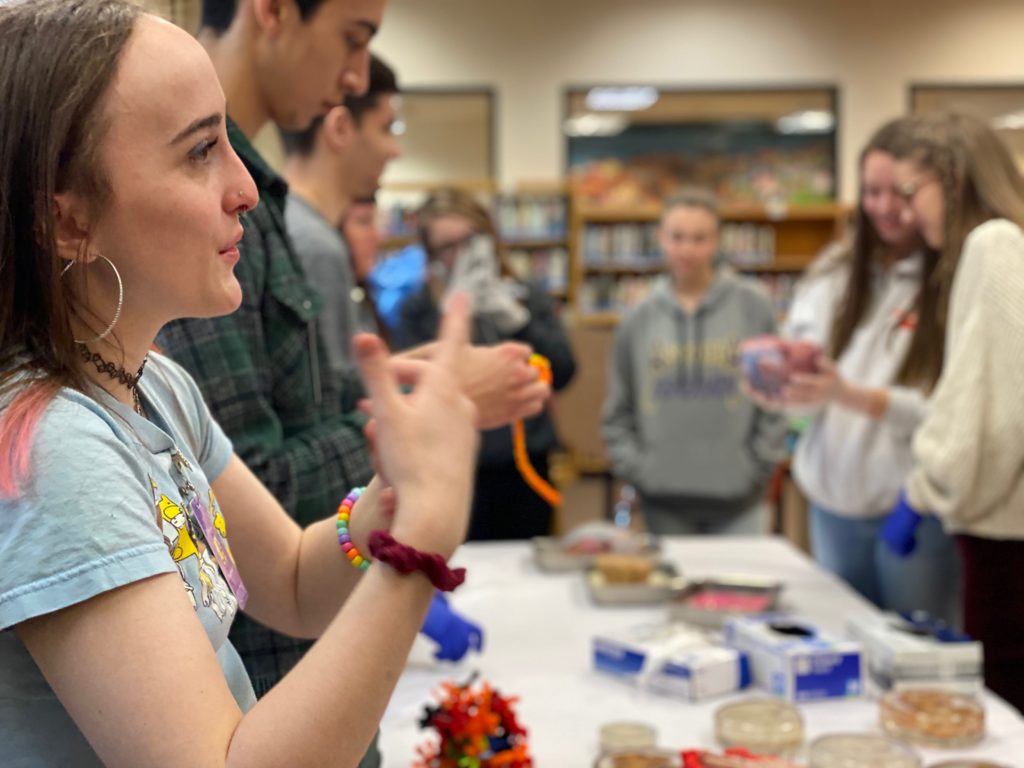
LEARN MORE: Video games don’t cause violence
“More and better data are crucial. But studies so far do not support fears that digital devices are driving the downfall of a generation.”
― Candice L. Odgers, from Nature
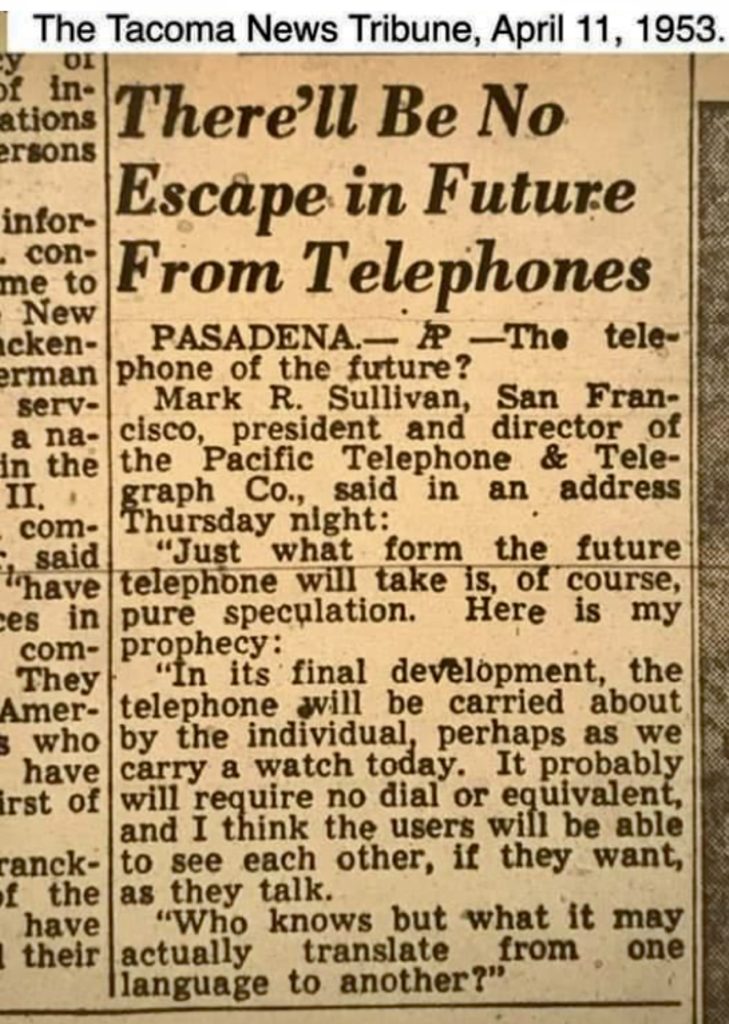
LEARN MORE: Smartphones are bad for some adolescents, not all
LEARN MORE: Mobile phone dependency and its impacts on adolescents’ social and academic behaviors
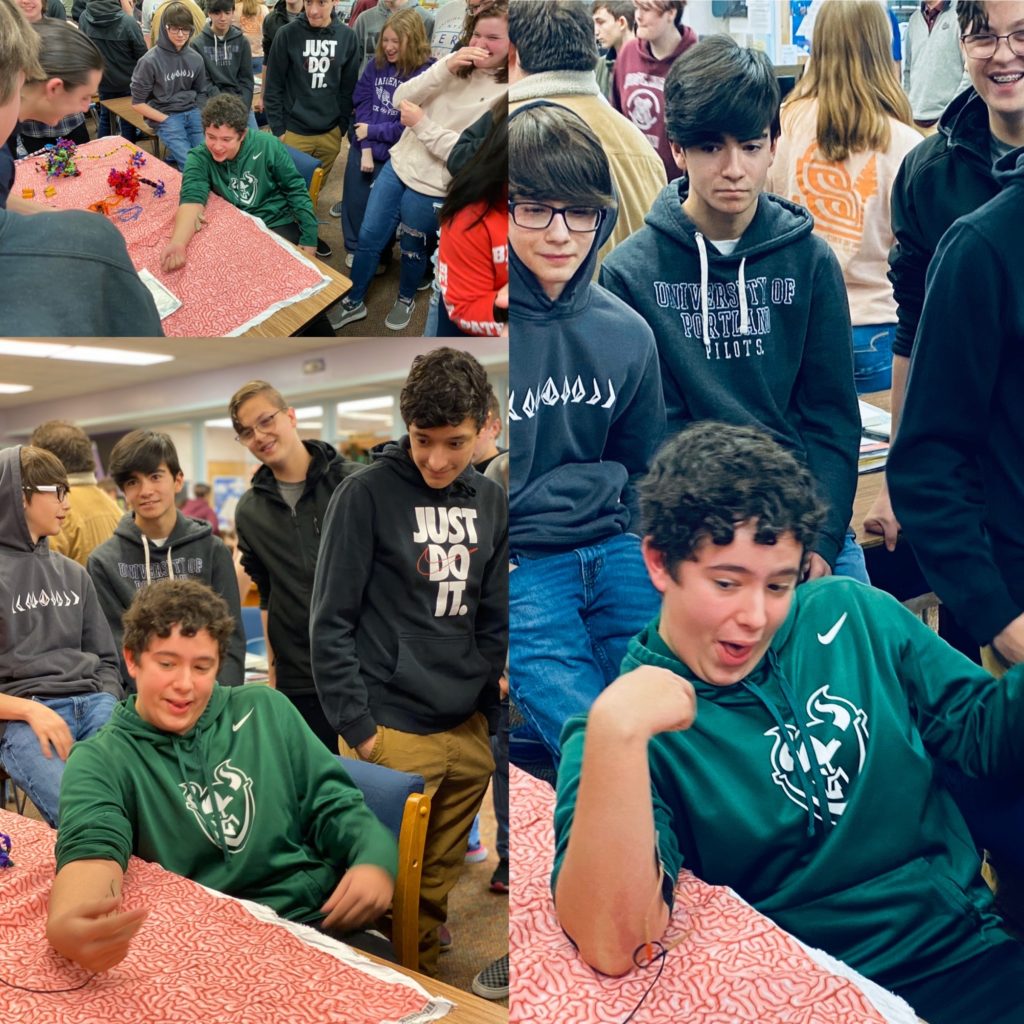
LEARN MORE: Multiple Sclerosis Information Page
LEARN MORE: Prion disease
LEARN MORE: Prion Disease Induces Alzheimer Disease-Like Neuropathologic Changes
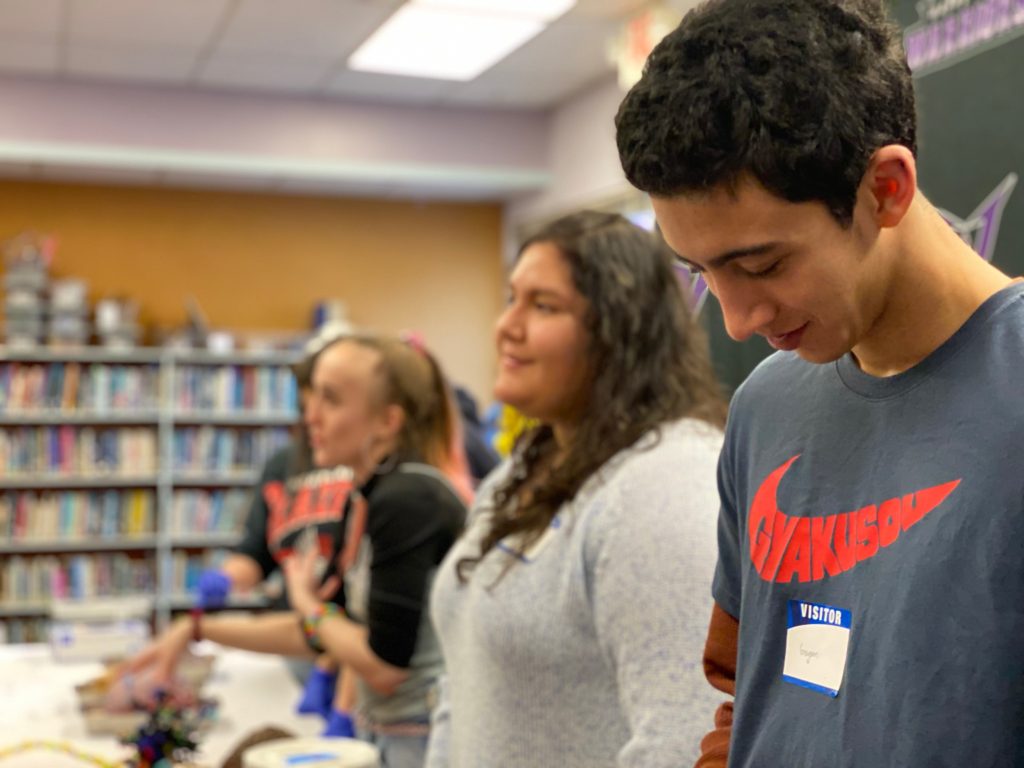
It is an absolute joy to see our volunteers work with K-12 students. They are excellent teachers, who listen carefully and welcome new questions and stories, engagingly share their own goals, interests and experiences, value art making, inquiry and mistakes, and effectively contribute to compelling classroom conversations about ongoing brain research!
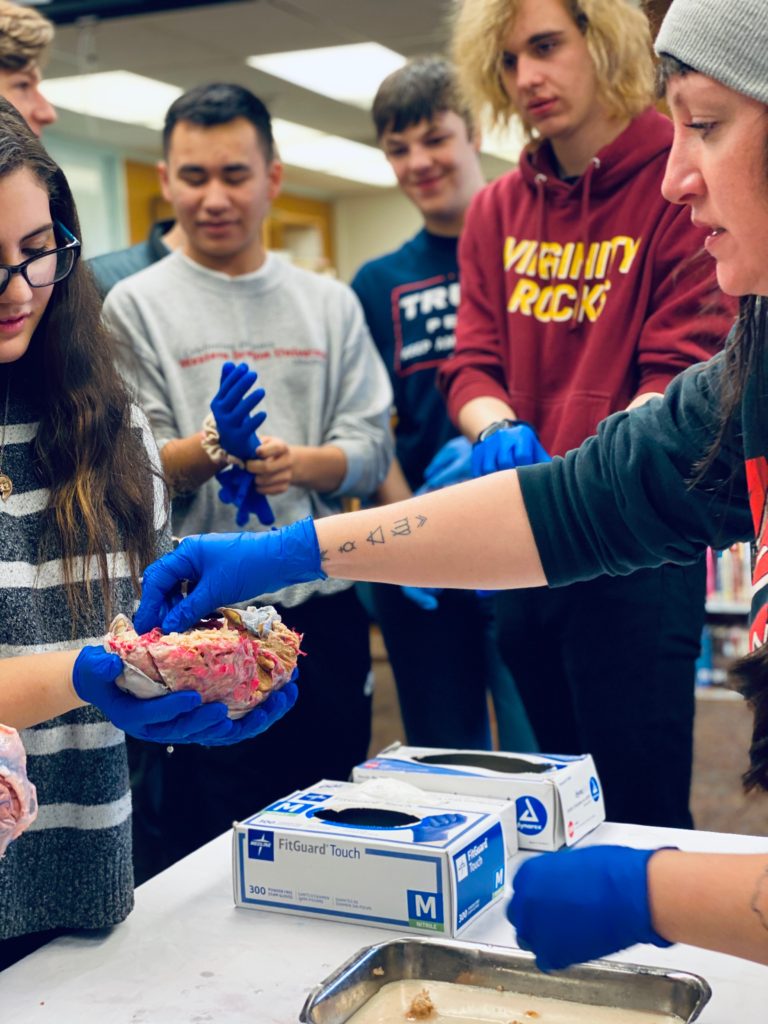
We once worked at a state university where authentic, student-led, arts-infused science communication was undervalued, where the students were drilled in rote memorization of “elevator pitches,” and where institutional resources went instead to expensive, paywalled, money-making “#SciTalk conferences” instead of genuine outreach and community engagement.
LEARN MORE: BioGifting brains
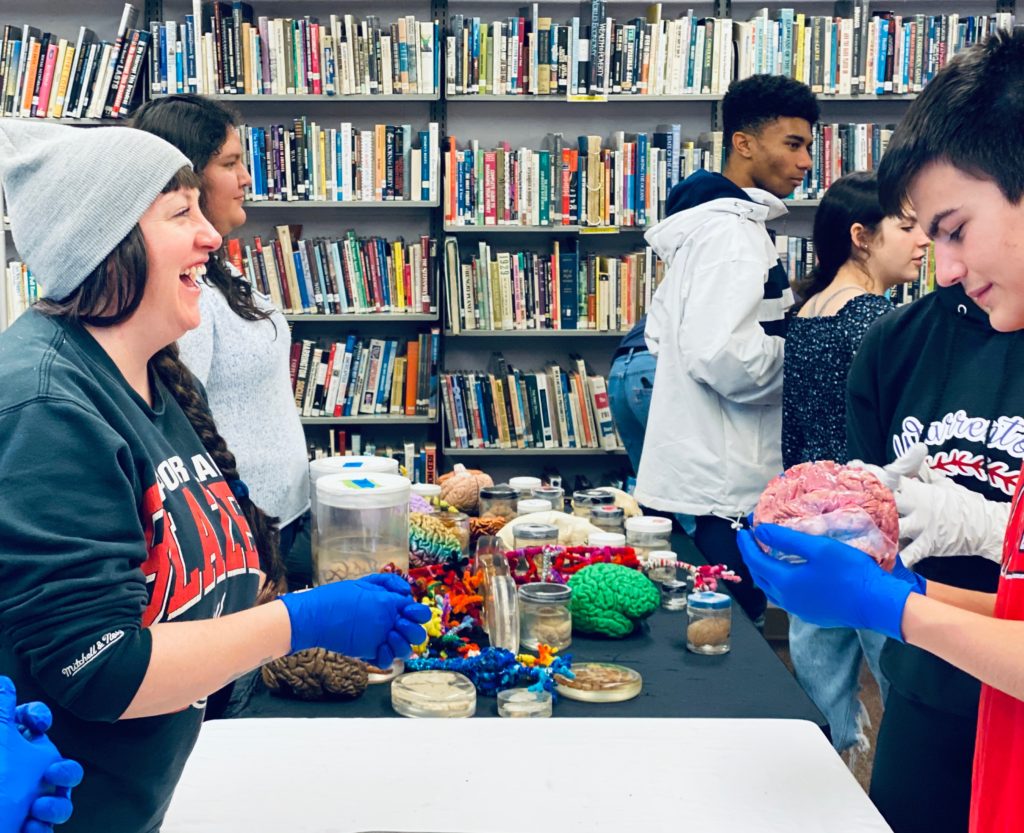
Actual science communication is clearly a better approach!
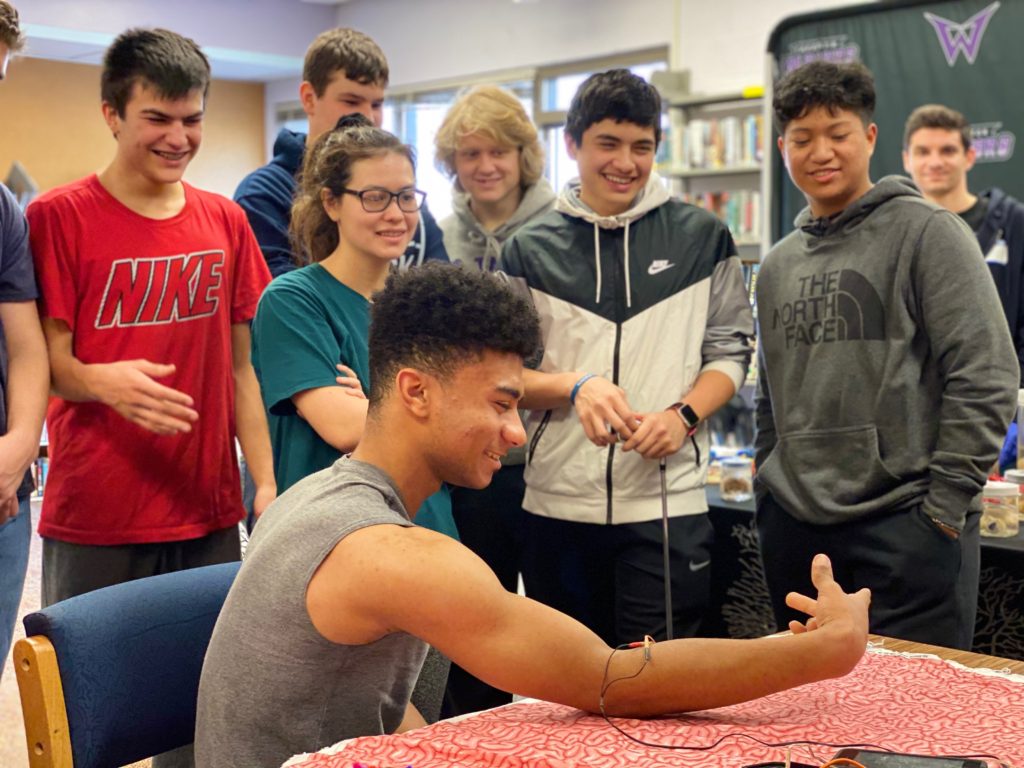
LEARN MORE: Brain hacking is electric!
And we learn so much more ourselves by going places and making new community connections. Our biases are challenged, our minds are opened, our ideas are refined, our skills in communicating research discoveries are improved. We build more creative brain cells (including glia!) out of pipe cleaners. Many large institutions prefer “in-reach,” where they remain comfortably on campus and make the community come to them.
“In-reach” is not what we do.
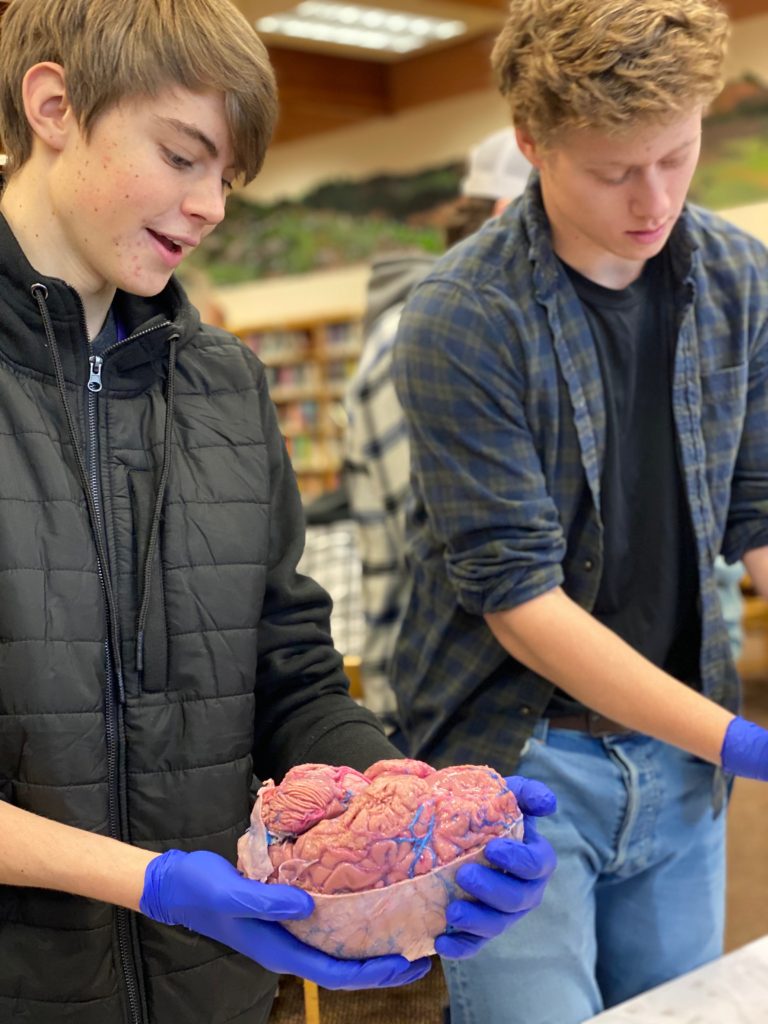
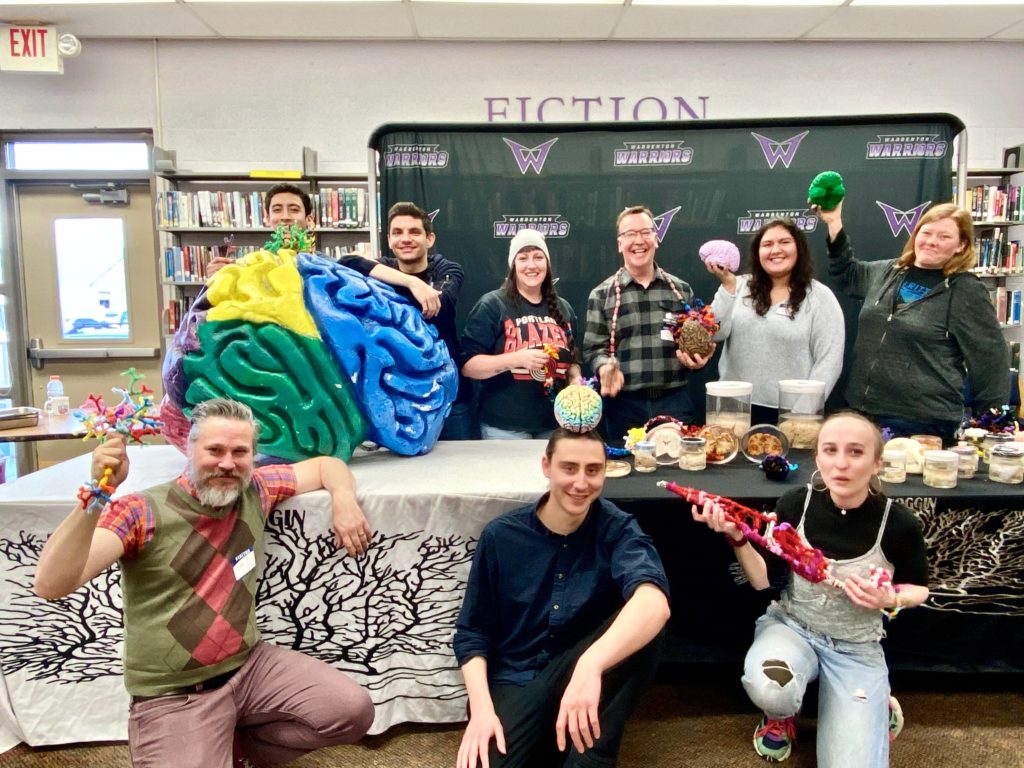
For example, after a full day with 250 high schoolers, the enthusiastic Steve Porter, the Biology, Anatomy/Physiology teacher (and “a science fiction nut of gargantuan dimensions!”) and his accomplished Warrenton students offered us a tour of the salmon hatchery on campus!
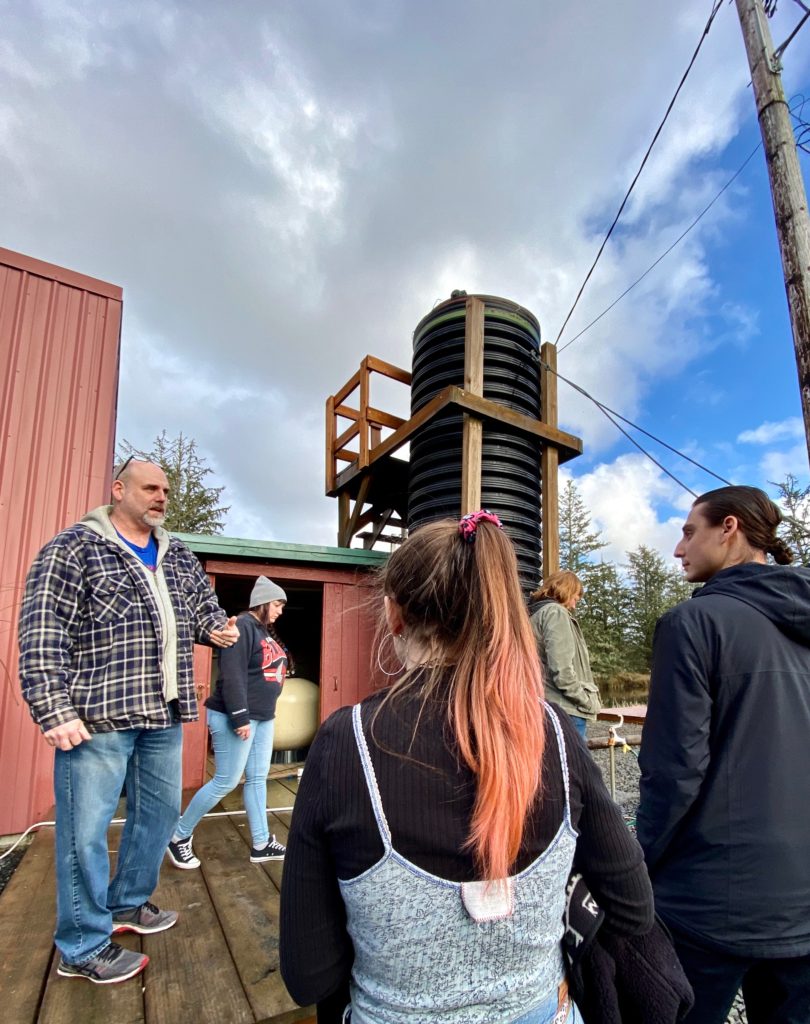
Students taught us about the remarkable life cycle of salmon, and we got to examine their tanks of alevins – salmon in their second developmental stage, with the nutritious yolk sac still attached.
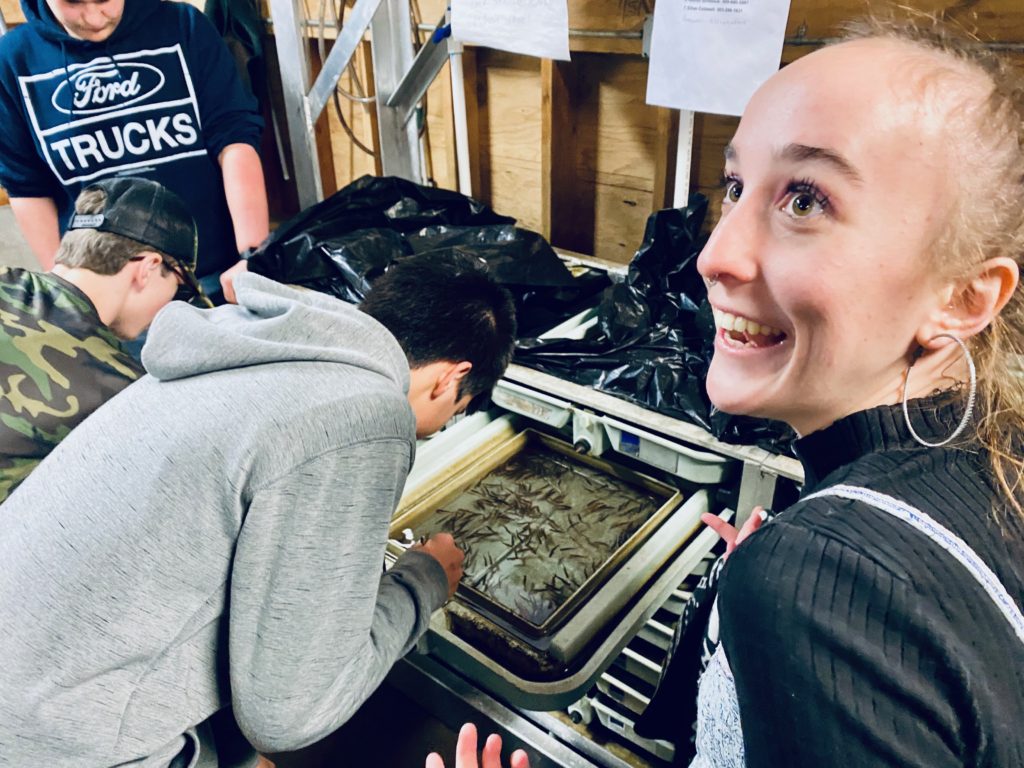

LEARN MORE: The Salmon Life Cycle
LEARN MORE: Visual-evoked responses in the salmon telencephalon change during smolt transformation
LEARN MORE: Olfactory Responses to Natal Stream Water in Sockeye Salmon by BOLD fMRI
We also loved hearing how Mr. Porter and a former student (Henry Balensifer, now the mayor) helped develop the hatchery, a celebrated part of the Warrenton community. In fact, the students were looking forward to publicly releasing thousands of their salmon later this spring!
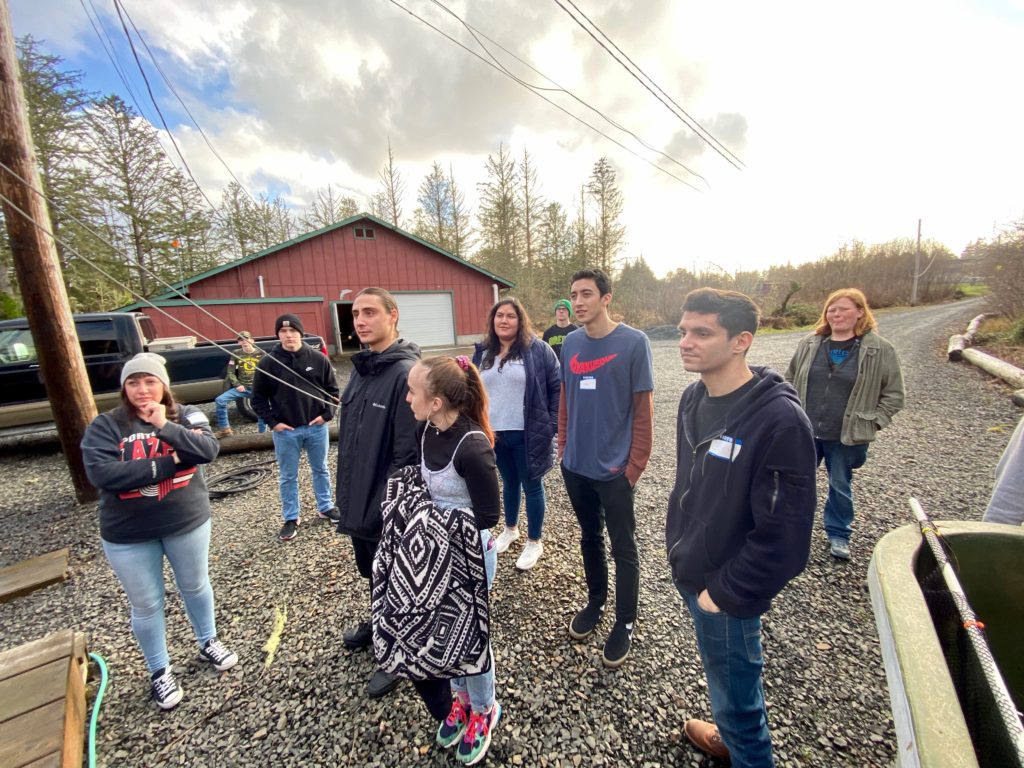
LEARN MORE: Warrenton High Fisheries
LEARN MORE: Warrior students ready the ‘Salmon Cannon’
After an exciting and educational day in Warrenton High, we headed to the beach! Oregon’s Fort Stevens State Park is home to the wreck of the Peter Iredale, a ship that ran aground in 1906…
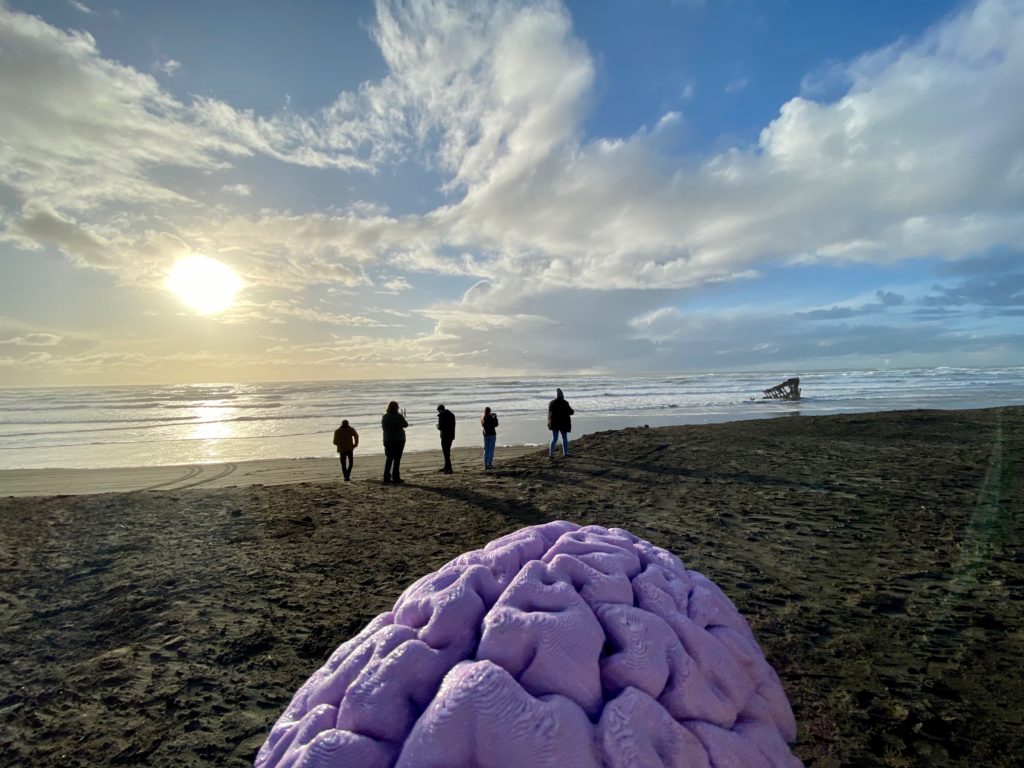
LEARN MORE: The Wreck of the Peter Iredale
LEARN MORE: Shipwrecks in Oregon
On day two we returned to Astoria High School, for more questions, discussion, art making and brains!
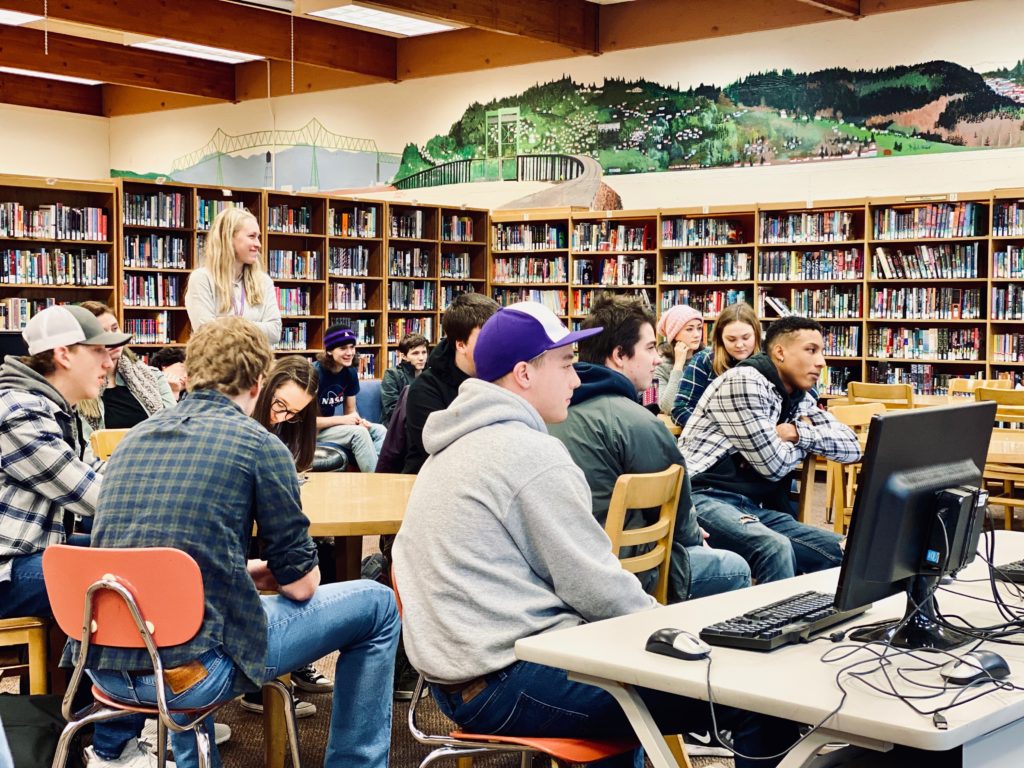
We met with hundreds of students throughout the day, in Psychology classes, Biology classes, Art classes and English classes…
“The Brain—is wider than the Sky—
― Emily Dickinson
For—put them side by side—
The one the other will contain
With ease—and you—beside—”
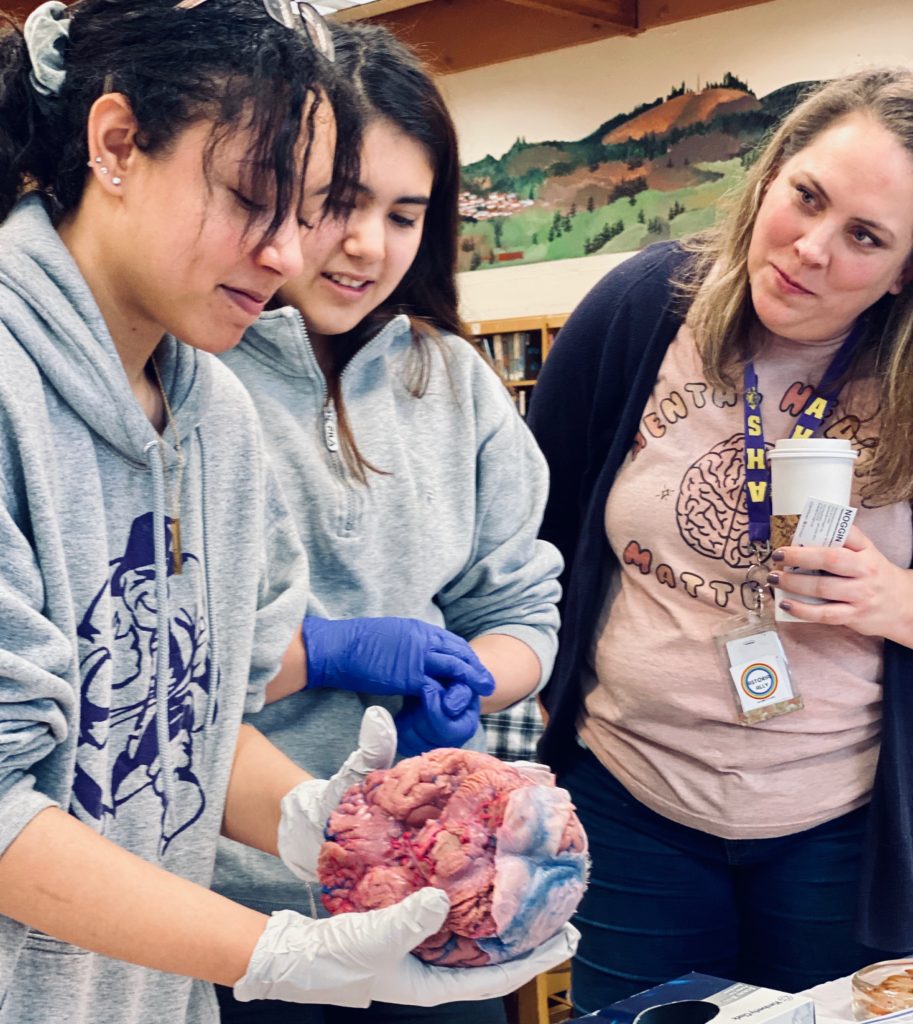
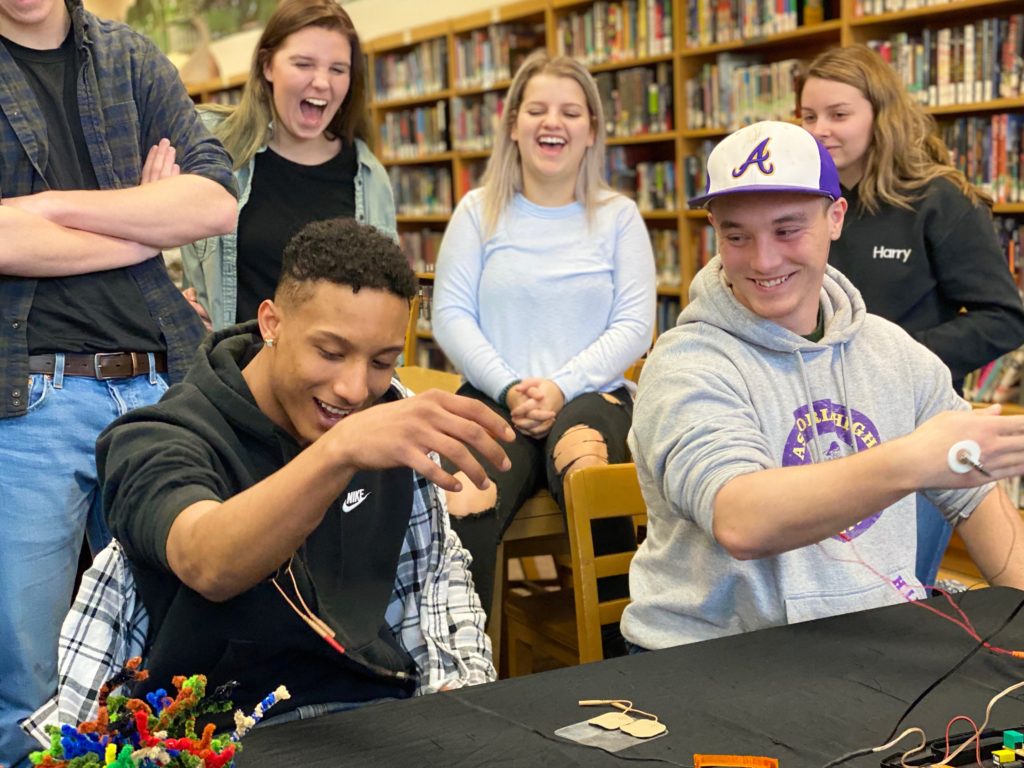
“What are the benefits of a #bilingual #brain? How are new #memories formed? Why does #cannabis give me #anxiety but helps my mom? What causes survivor grief? #Sleep paralysis? Lucid dreaming?”
From Lidia Echeverria-Garcia, NW Noggin volunteer: “In Warrenton High School, a student asked a question about language ‘code-switching’ and if that is ‘good or bad’ for bilinguals. Short answer: there are many benefits for bilinguals to code-switch both verbally and in their heads! One study (Bilingual Processing Strategies in the Social Context of an Undergraduate Immersion Program) found that mentally translating material from one language to another can help people better understand what the material is about. Also they noticed how students would translate material from their native language to English to better understand the material because the material was taught to them in English. In the end, the bilingual brain can be very unique, and there are many benefits that come with bilingualism.”
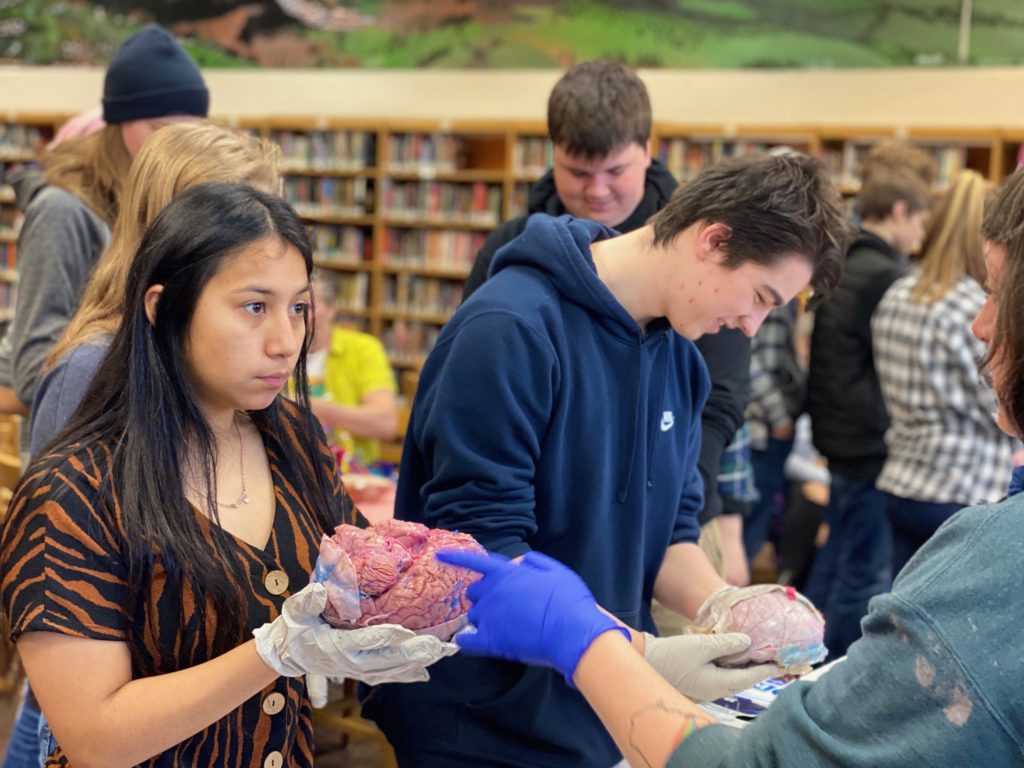
LEARN MORE: Reshaping the mind: The benefits of bilingualism
LEARN MORE: Latino Network Learning & Lobes
LEARN MORE: Bilingual Effects in the Brain
LEARN MORE: Bilingualism boosts the brain, NIH study finds
LEARN MORE: Bilingual Brains Are Buff (National Institute on Drug Abuse)
LEARN MORE: How does the bilingual experience sculpt the brain?
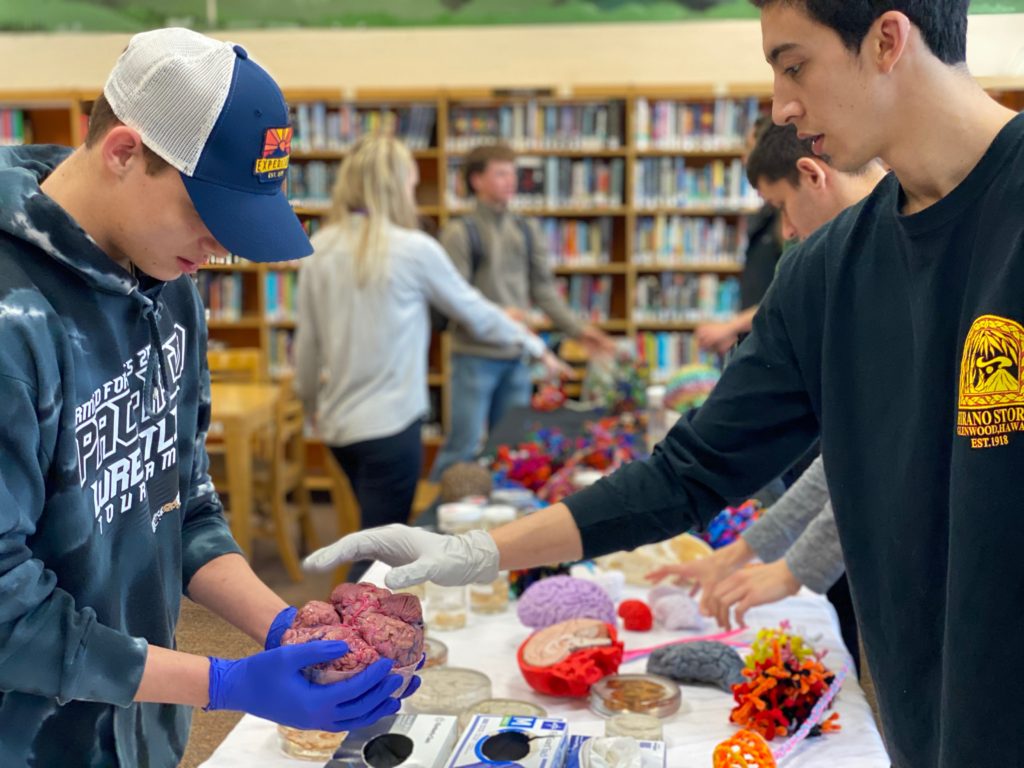
From Greyson Moore, NW Noggin volunteer: “I thought about how much the Anatomy teacher at Warrenton cared about the fish hatchery and in turn how much discipline the students showed in caring for the fish – that was really inspiring and encouraging. It was also mentioned that they held an event where students released the fish that the whole community was invited to attend. It made me feel really good hearing about how the whole process seemed to bring everyone together a little more.”
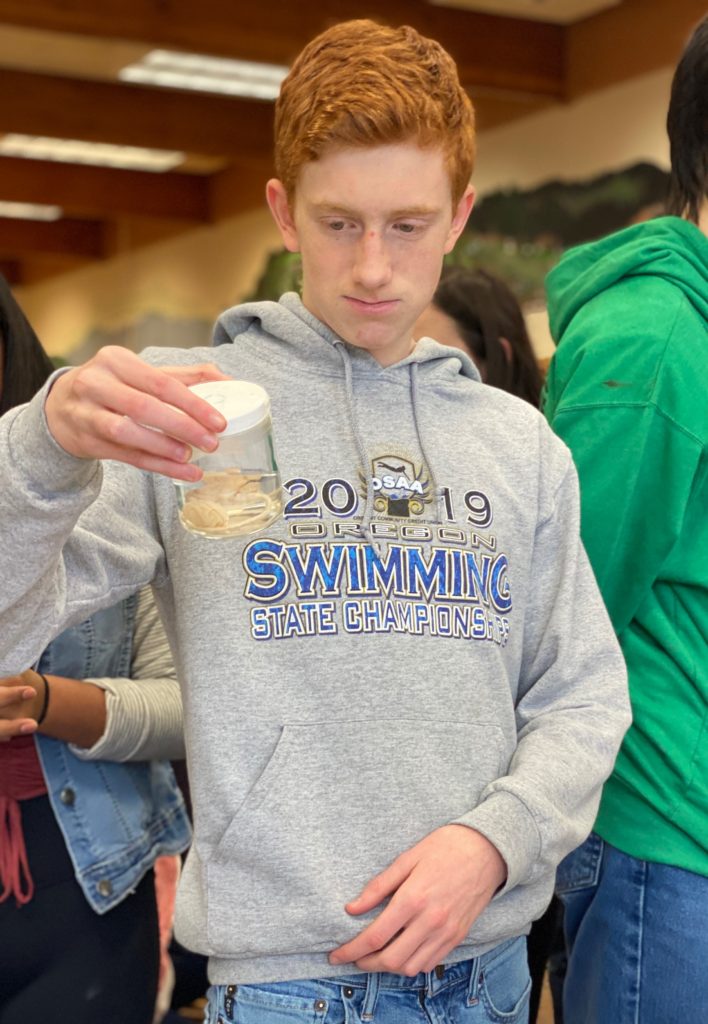
“In Astoria the students seemed to be learning a little more about mental health, especially in the psychology courses. A lot of the students recognized NW Noggin from a year ago which was pretty cool. I had a conversation with a student about how neurons typically synapse and she already knew everything I was trying to explain! That was very exciting to see because they knew way more than I did when I was that age.”
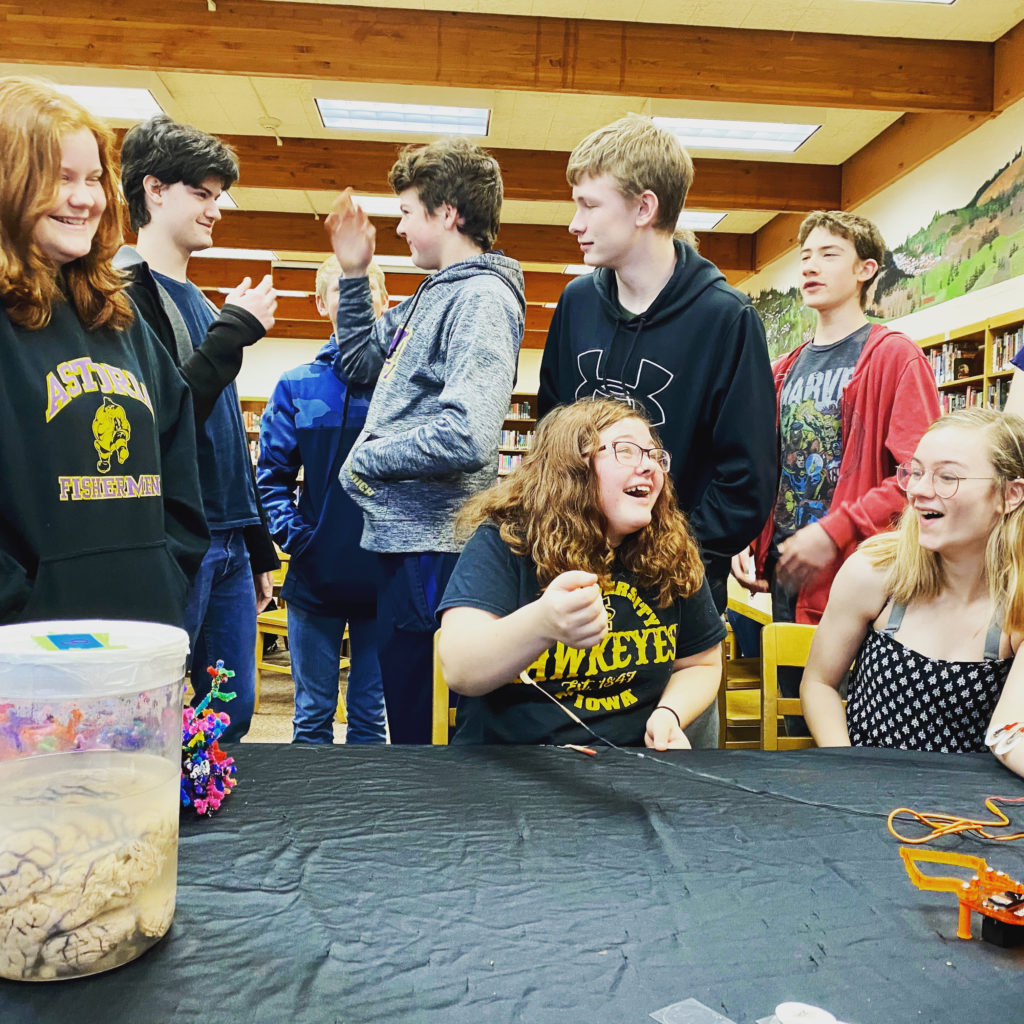
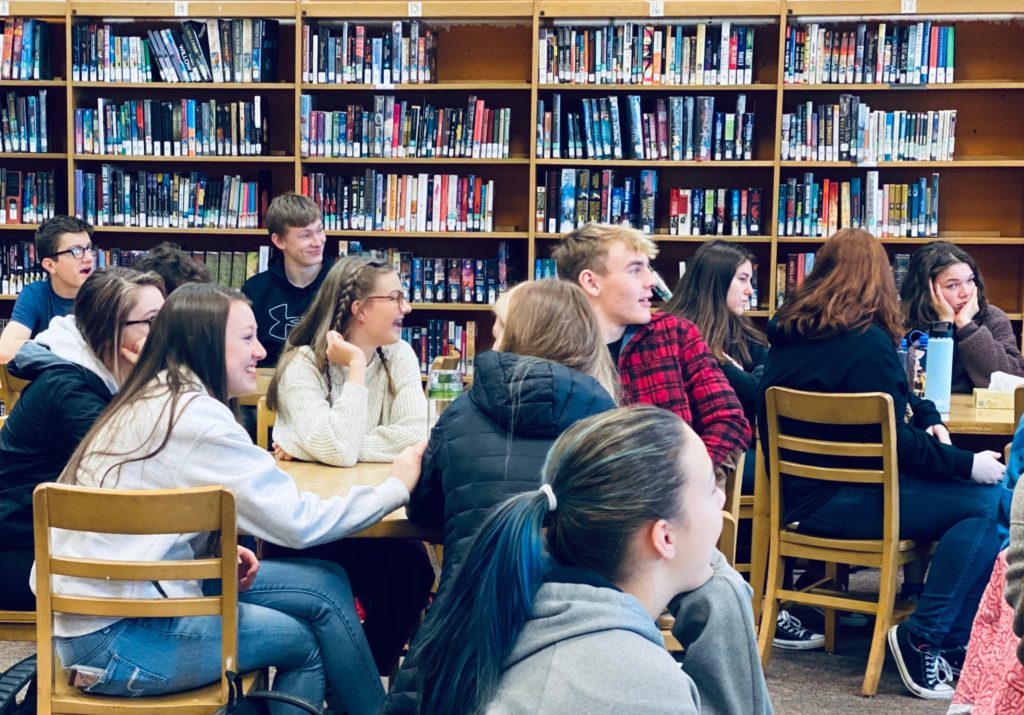
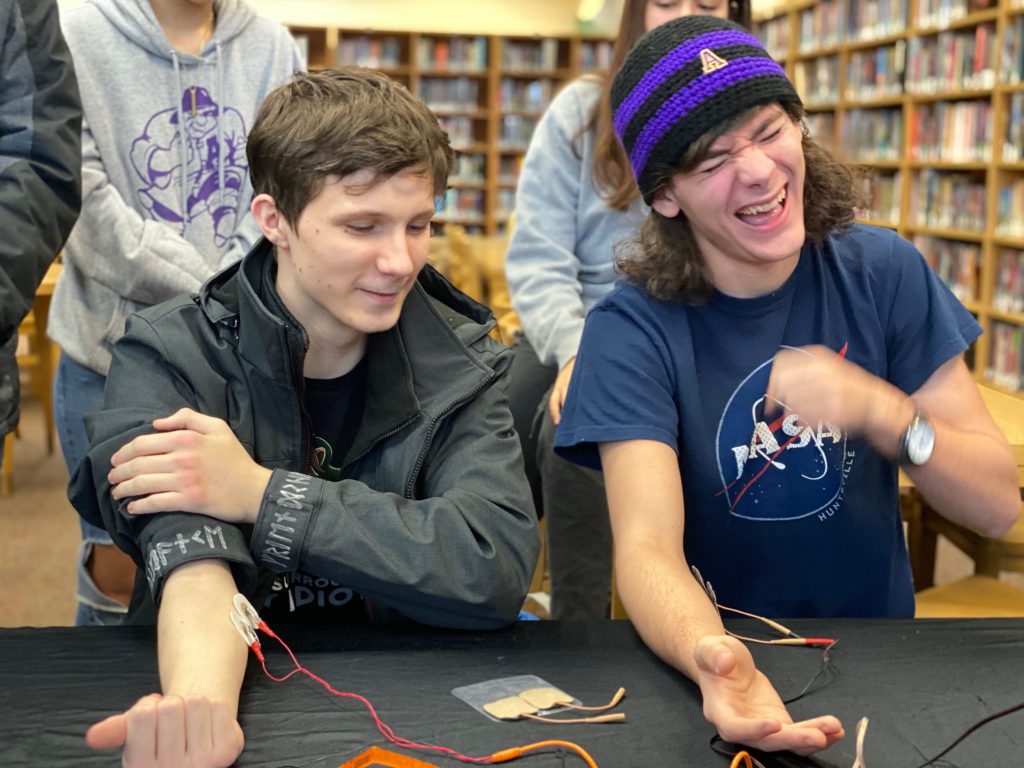
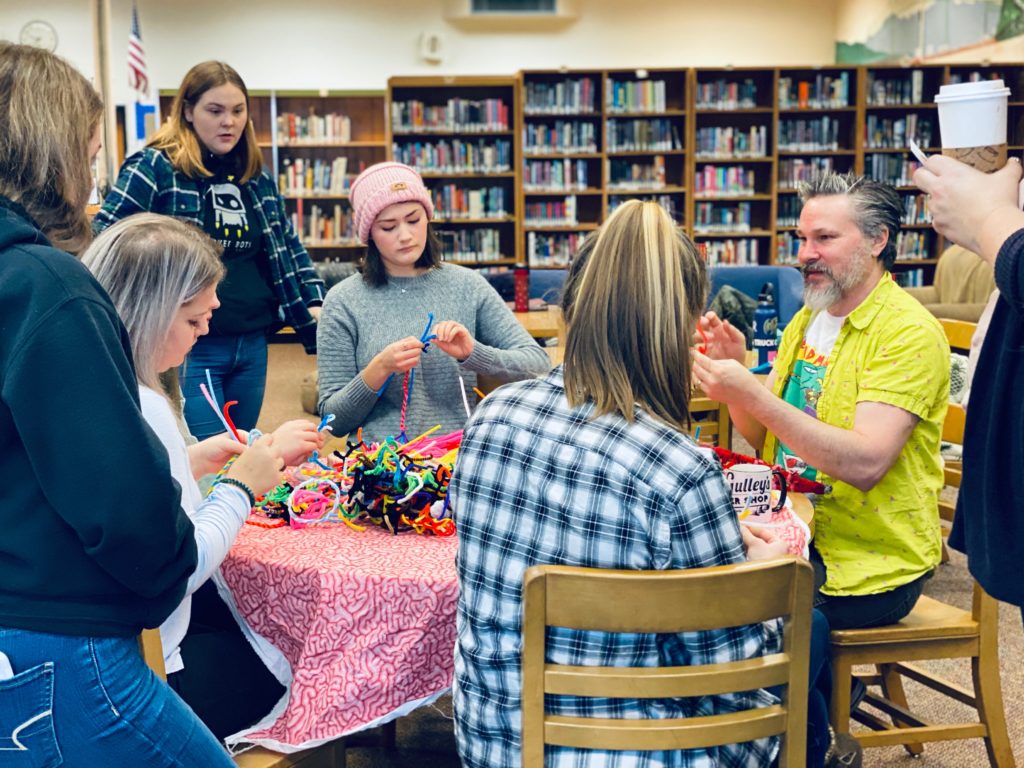
So many wonderful, unscripted, pitch-free, all-volunteer moments of engagement, learning, genuine interest and motivation – science communication in action.
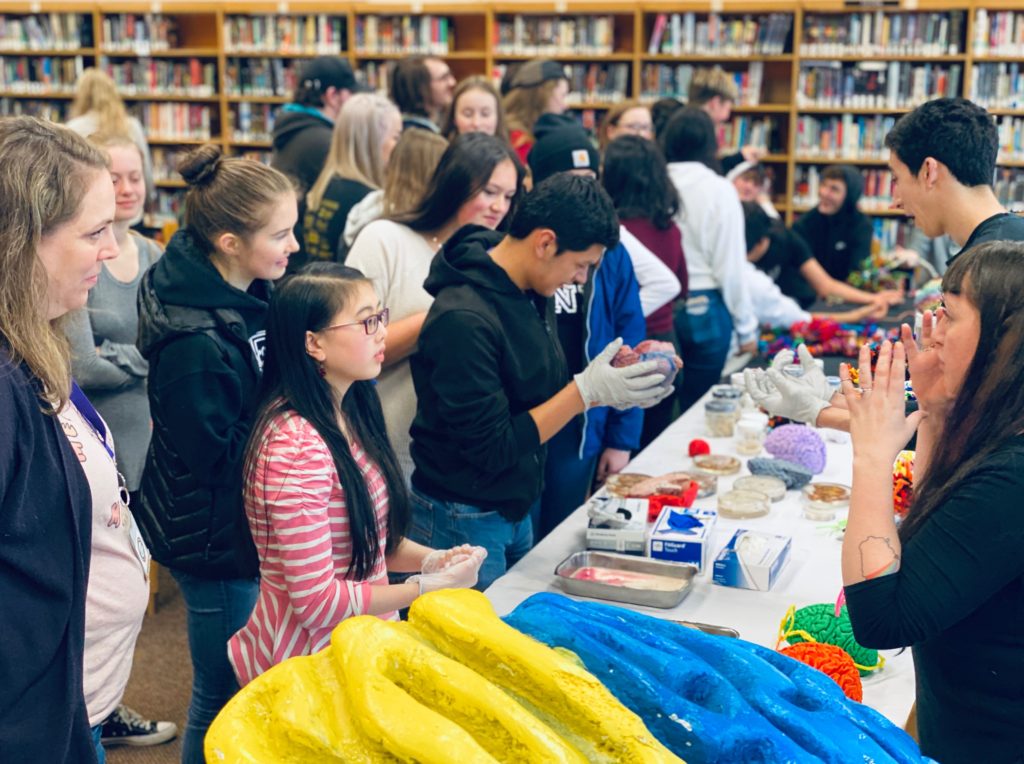
From NW Noggin volunteer Joey Seuferling: “I love these experiences! Students have these wonderful big dreams of careers as doctors, biologists, researchers, artists – and so many came up to tell me all about them. I think we make an impact by talking about dreams and showing them that you can, like us, try to pursue them further. In some cases this was in spite of family or societal pressures to do something that was a ‘better fit.’ For example, one girl said her parents told her that as a woman she could become a nurse, but not a doctor. One boy told me his mom said he shouldn’t pursue more education, since unlike her, he couldn’t ‘work enough to support himself like she had.'”
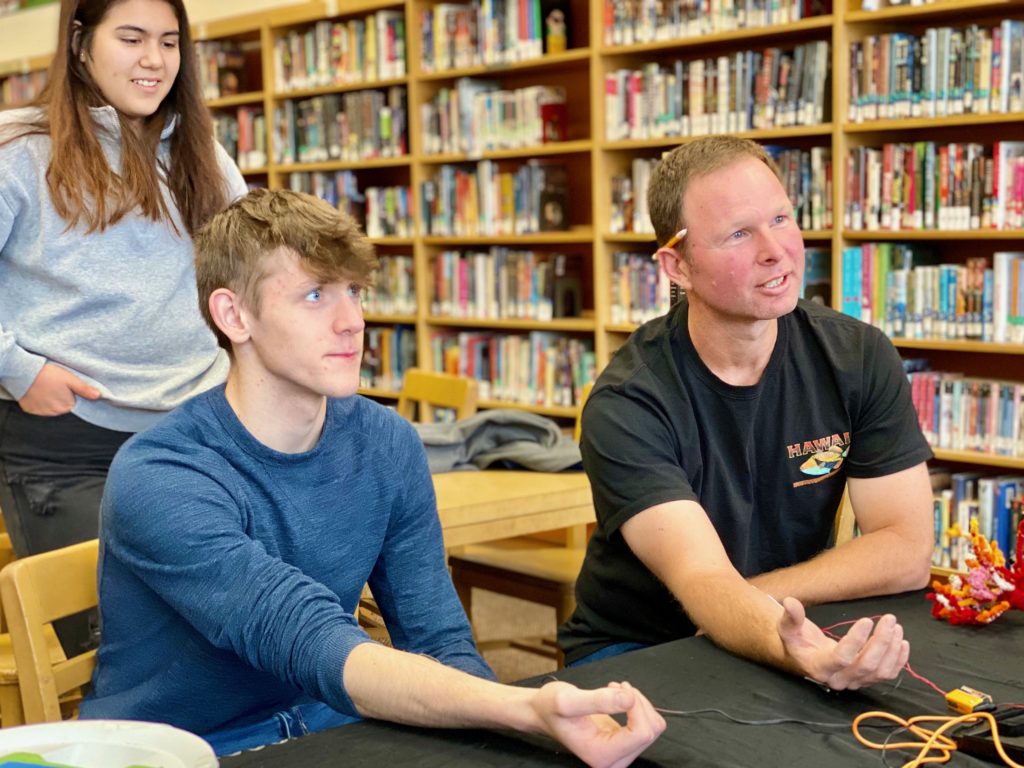
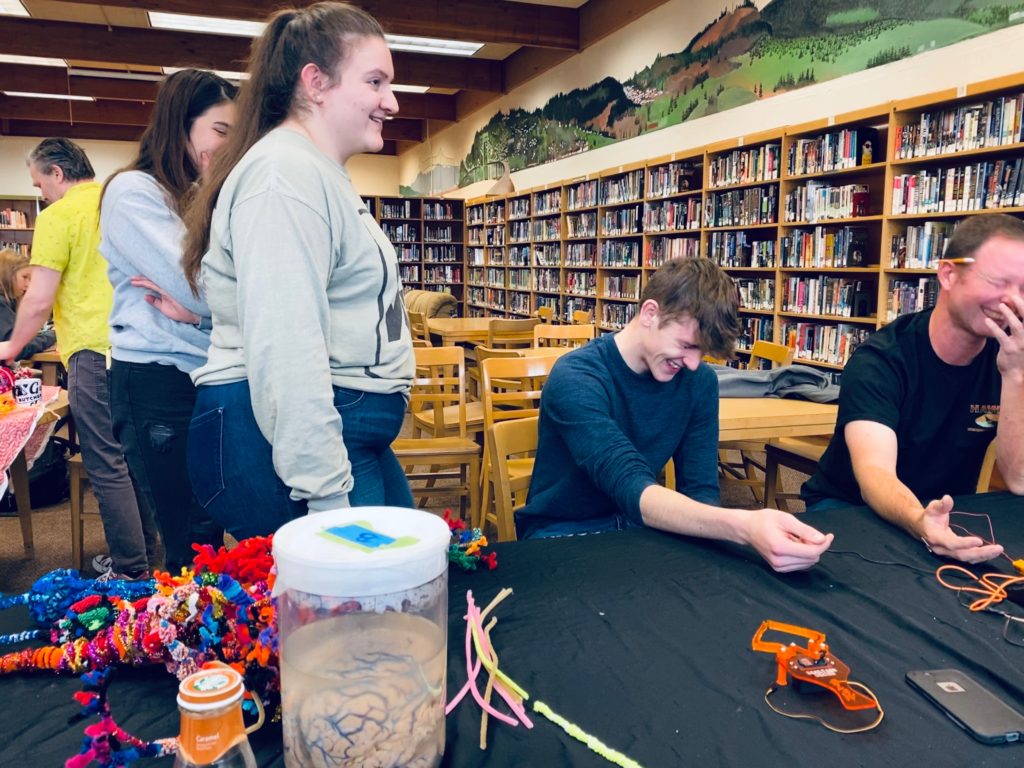
From Jeff Leake, NW Noggin Arts Coordinator: “Art has broad value in teaching. The arts can and should provide a critical foundation for all student learning. It teaches students that any problem can be approached in an individual and unique way that does not necessarily need to conform to a standard approach. It teaches students to find connections between disparate ideas, concepts, and fields allowing them to explore themselves, the world around them and their place in it. The arts allow us to embody the perspective of others, giving students the capacity to cause shifts in thought allowing them to view the world in new and different ways.”
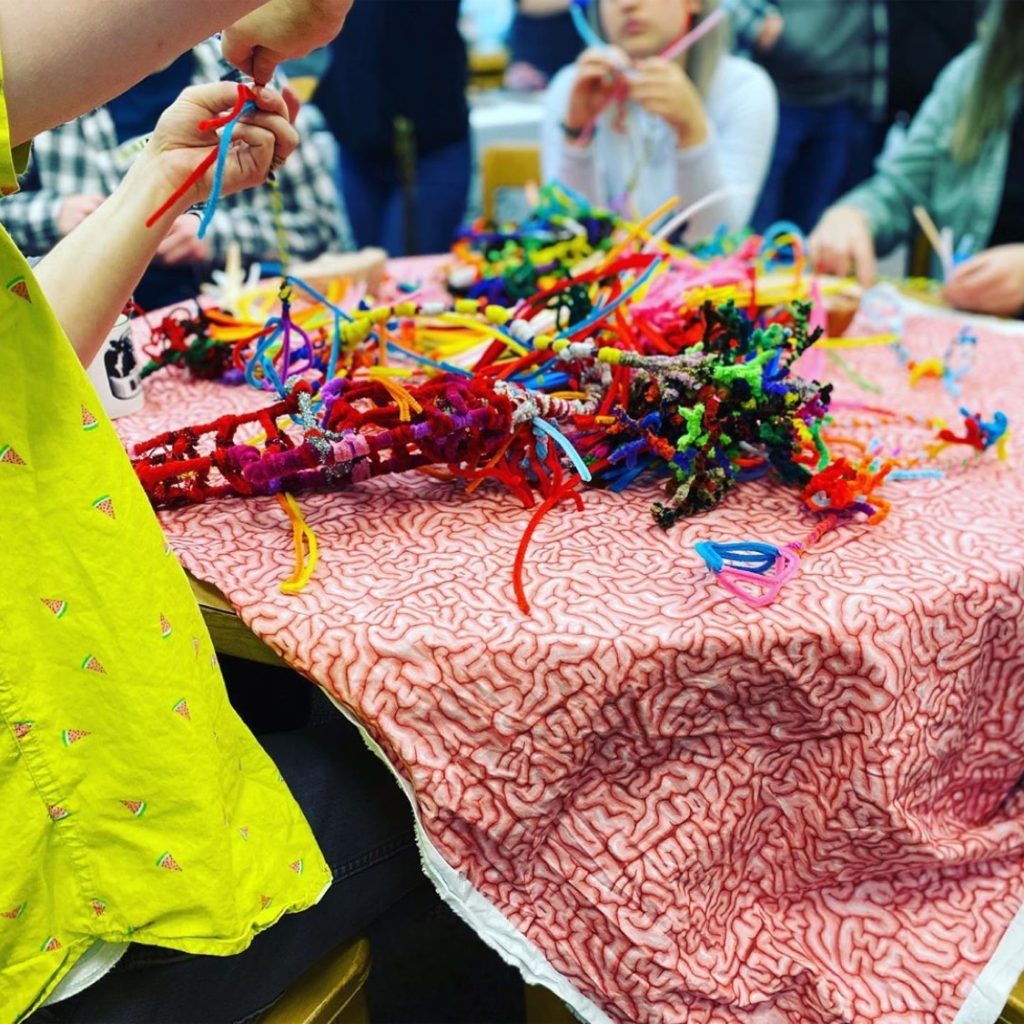
LEARN MORE: Why Art? Noggins go to Washington
LEARN MORE: STEAM on the Hill: A Conversation with Rep. Suzanne Bonamici
LEARN MORE: The neuroscience of teaching art & science
“Art teaches a student that their own voice, vision, and ideas are valid and relevant.”
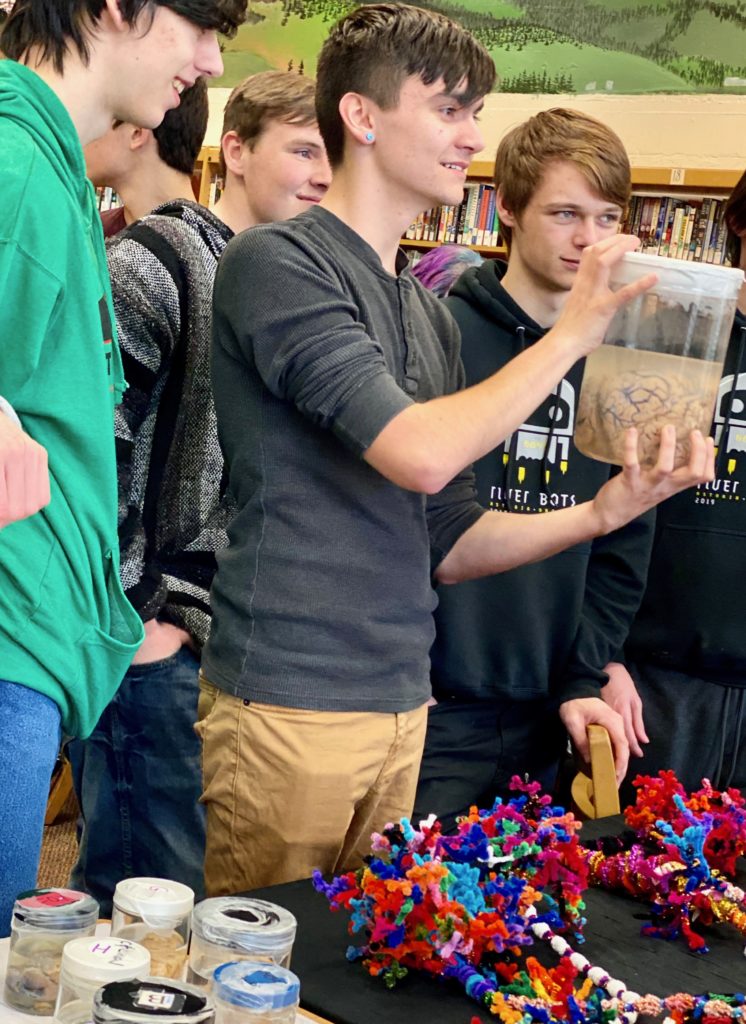
From Angela Hendrix, NW Noggin volunteer: “I love getting out of the city to help introduce enriching opportunities and learn about new places. In Warrenton and Astoria the students were very engaged and respectful. They had a great understanding of the brain and stimulating questions. I care for people experiencing dementia, and a few of the teachers approached me with questions on Alzheimer’s disease. And one student was really mind-blown about the idea of aphantasia.”
LEARN MORE: What Is Alzheimer’s Disease?
LEARN MORE: Alzheimer’s Caregiving (National Institute on Aging)
LEARN MORE: The blind mind: No sensory visual imagery in aphantasia
One of the best aspects of these synaptic community connections are the inspiring students, teachers and staff we are privileged to meet. Thank you Warrenton & Astoria!
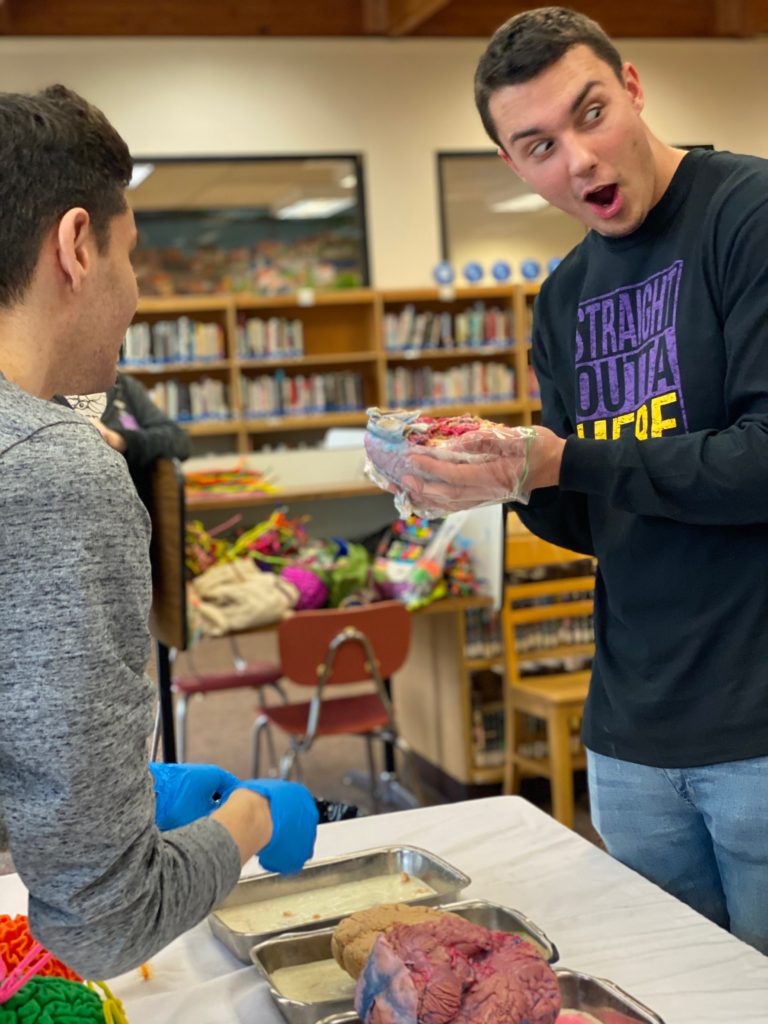
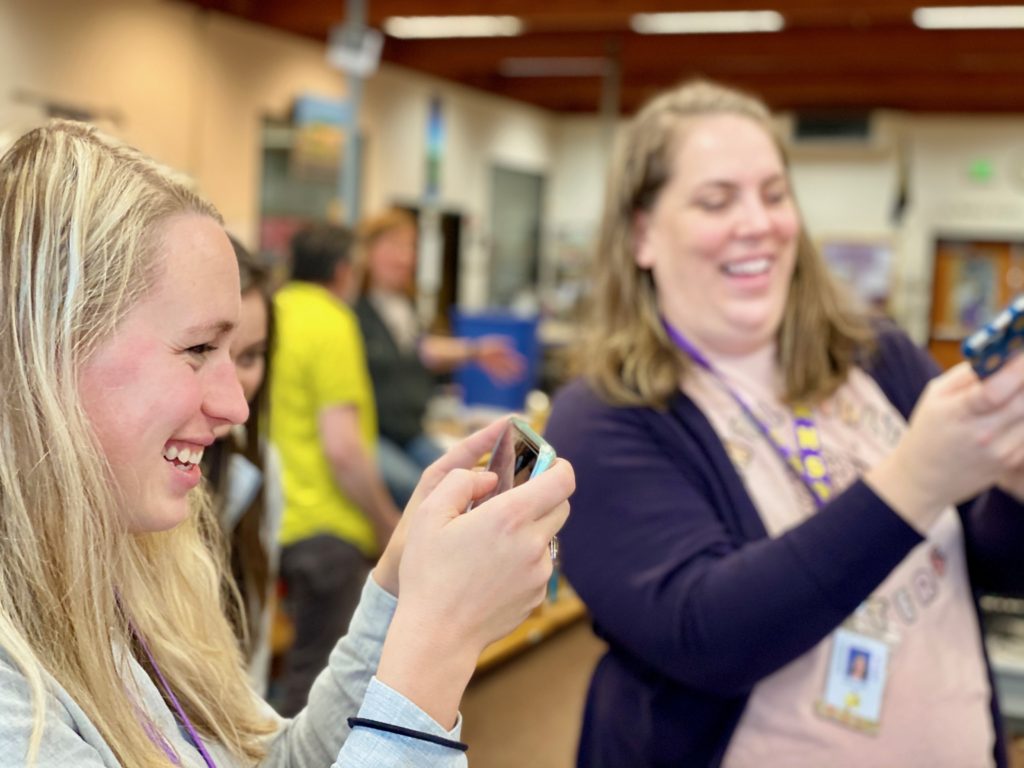
LEARN MORE: NW Noggin Synaptic Community Connections
And thank you for food! Lunches were provided by Street 14 Café and the Fort George Brewery! Many thanks to Micha Lattek of Street 14, Jack Harris and Zack O’Connor from the Fort – and to Meredith Payton from Clatsop Community College – for fueling our hungry noggins!
